Atlanta has been getting thinner at defensive end as the 2020 season rolls along, but that hasn't caused a dramatic decrease in the Falcons' ability to pressure the opposing quarterback. In fact, it's had quite the opposite effect.
How can that be; isn't the defensive line – and edge rushers in particular – responsible for the pressure generated on the quarterback? It's a bit more complicated than that, but, generally, teams like to apply pressure with only their guys on the line of scrimmage. Under interim head coach Raheem Morris, the Falcons have been increasingly effective at getting pressure in a variety of ways.
RELATED CONTENT
Dante Fowler and Takk McKinley entered the season as the Falcons' starting pass rushers at defensive end. Fowler has been dealing with injuries for much of the season and missed Atlanta's Week 9 matchup against the Denver Broncos. McKinley had an opposite story. He missed three of the team's final four games – suiting up against the Detroit Lions – and was released by the club during the bye week.
The normal assumption would be that without their top two edge rushers on the field together for virtually all of Morris's time in charge, the Falcons would blitz more frequently to compensate. That's actually proven out to be the wrong assumption. They've been blitzing a good deal less.


The two charts above tell a fascinating story.
Dan Quinn received criticism for the Falcons defense playing too conservatively at times to start the season. That would be understandable, given the leads Atlanta played with through its first five games, but the stats simply don't give credence to that notion. Or, at least when compared to the defense's play under Morris.
During the Falcons' 0-5 start, they did not bring more than four rushers on 68.1 percent of their opponents' dropbacks. They applied pressure 30 times in those 143 dropbacks, a pressure rate of 20.9 percent. Since Morris took over, the Falcons have opted not to bring an extra blitzer on 75.3 percent of opposing dropbacks. Of those 116 plays, the Falcons had a pressure rate of 31 percent.
That's a fairly substantial increase in pressure even when the Falcons are choosing to stick with just a four-man rush or even a three-man rush much more frequently.
When comparing those numbers with the first chart above, a bigger picture comes together.
In line with the decision to bring four men or less more frequently, the Falcons are blitzing at a much lower rate, but they have been more precise and effective.
Under Quinn, the Falcons sent at least five players on 31.9 percent of their opponents' dropbacks and earned a pressure rate of 25.3 percent – 17 total pressures on 67 snaps. Since then, the Falcons have only brought extra rushers on 38 dropbacks or 24.6 percent of their opponents' totals. They've gotten pressure on 13 of those plays, however, equating to a pressure rate of 34.2 percent, another notable increase.
There are some caveats to this improved play, starting with the quarterbacks the Falcons faced in those two defined time periods. In their first five games, the Falcons played Russell Wilson, Dak Prescott and Aaron Rodgers. They haven't faced someone of that caliber the last four games.
Despite some of the outside factors that could impact these numbers, it's also worth noting that they've been accomplished without McKinley or Fowler on the field together much. That all points to the Falcons getting creative, something fans may have noticed.
That creativity all comes down to who the Falcons are choosing to send. Atlanta has unlocked linebackers Deion Jones and Foye Oluokun as well as safety Keanu Neal as blitzers. It's not just that they are using them more, however, because as we showed above, that's not the case. It's how they are using them.
In their first five weeks, the Falcons often brought multiple defenders up to the line of scrimmage. With as many as seven players crowded around the offensive line, the Falcons attempted to confuse the offense after the snap by dropping some defenders into coverage and rushing with the rest. This was effective at times, but it also gives the offense a chance to think about the multiple scenarios that could play out.


The two pictures above show how the Falcons would bring more players to the line of scrimmage to give the threat of a blitz. It applies greater stress on the offensive line if five players do end up coming, but the line has a little bit of a heads up.
In recent weeks, Atlanta has been much more simplistic in its blitzes. They don't provide too much, if any, of a heads up that an added defender is coming, and they rely on their top athlete's getting a great jump. It's no surprise that Oluokun and Jones, two athletic linebackers, have proven to be great blitzers, but Neal's instincts in rushing the passer have notably improved.
Watch in the clips below how the Falcons utilize the inside gaps with their blitzers while relying on them to get in the backfield quicker than anyone can react.
In their previous four games under Morris, the Falcons recorded seven sacks – the same number they achieved in five games under Quinn. Those sacks have come about in different ways, though. Despite blitzing more with Quinn, the Falcons were less successful when bringing more than four guys.
Morris has figured out how to make the Falcons a much more efficient blitzing team, which has helped them earn wins with key defensive plays late in a game. If the Falcons continue to improve in this aspect of the game, it could help them greatly down the stretch.
Get an inside look at the matchup between the Atlanta Falcons and Detroit Lions with top photos from inside Mercedes-Benz Stadium in Week 7.

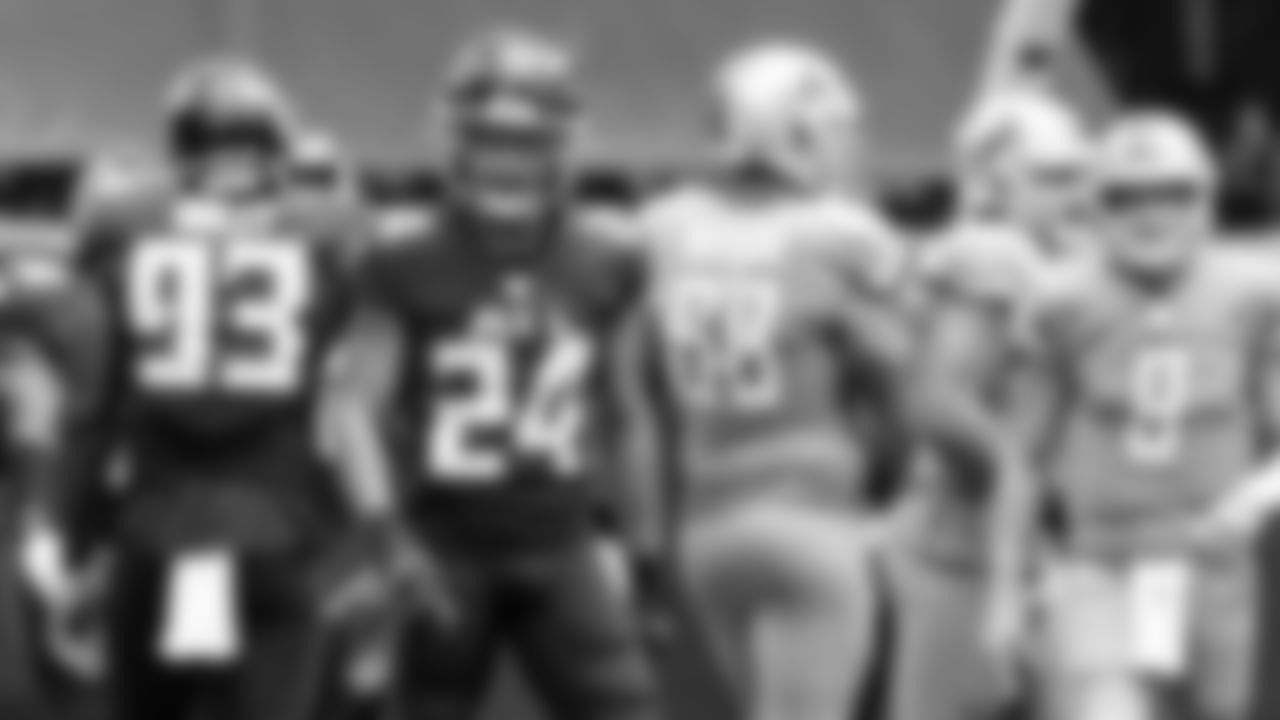
Atlanta Falcons cornerback A.J. Terrell #24 is shown after tackling Detroit Lions quarterback Matthew Stafford #9 during the first quarter against the Detroit Lions on October 25, 2020. (Photo by Rob Foldy/Atlanta Falcons)

Atlanta Falcons quarterback Matt Ryan #2 in action during the second quarter against the Detroit Lions on October 25, 2020. (Photo by Rob Foldy/Atlanta Falcons)

Atlanta Falcons wide receiver Julio Jones #11 in action during the first quarter against the Detroit Lions on October 25, 2020. (Photo by Rob Foldy/Atlanta Falcons)

Atlanta Falcons tight end Hayden Hurst #81 in action during the second quarter against the Detroit Lions on October 25, 2020. (Photo by Rob Foldy/Atlanta Falcons)
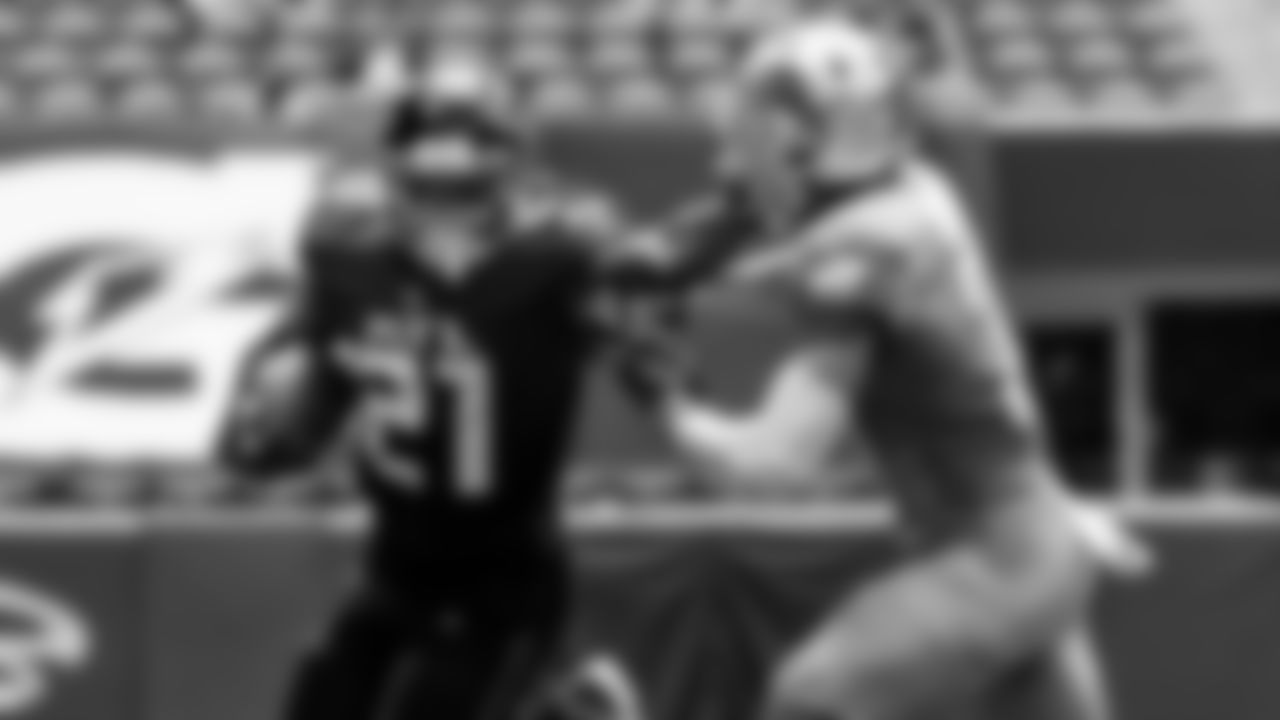
Atlanta Falcons running back Todd Gurley #21 in action during the second quarter against the Detroit Lions on October 25, 2020. (Photo by Rob Foldy/Atlanta Falcons)

Atlanta Falcons quarterback Matt Ryan #2 in action during the first quarter against the Detroit Lions on October 25, 2020. (Photo by Rob Foldy/Atlanta Falcons)
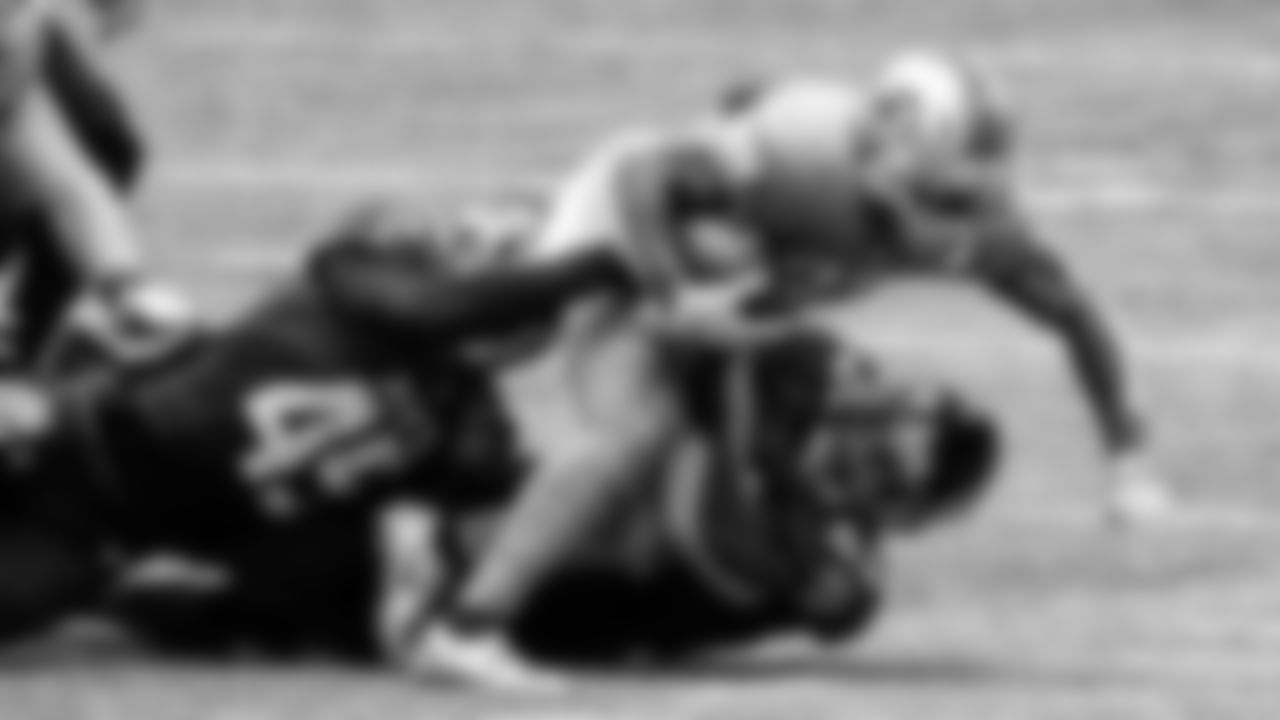
Atlanta Falcons linebacker Deion Jones #45 and linebacker Mykal Walker #43 make a tackle during the first half against the Detroit Lions on October 25, 2020. (Photo by Kyle Hess/Atlanta Falcons)
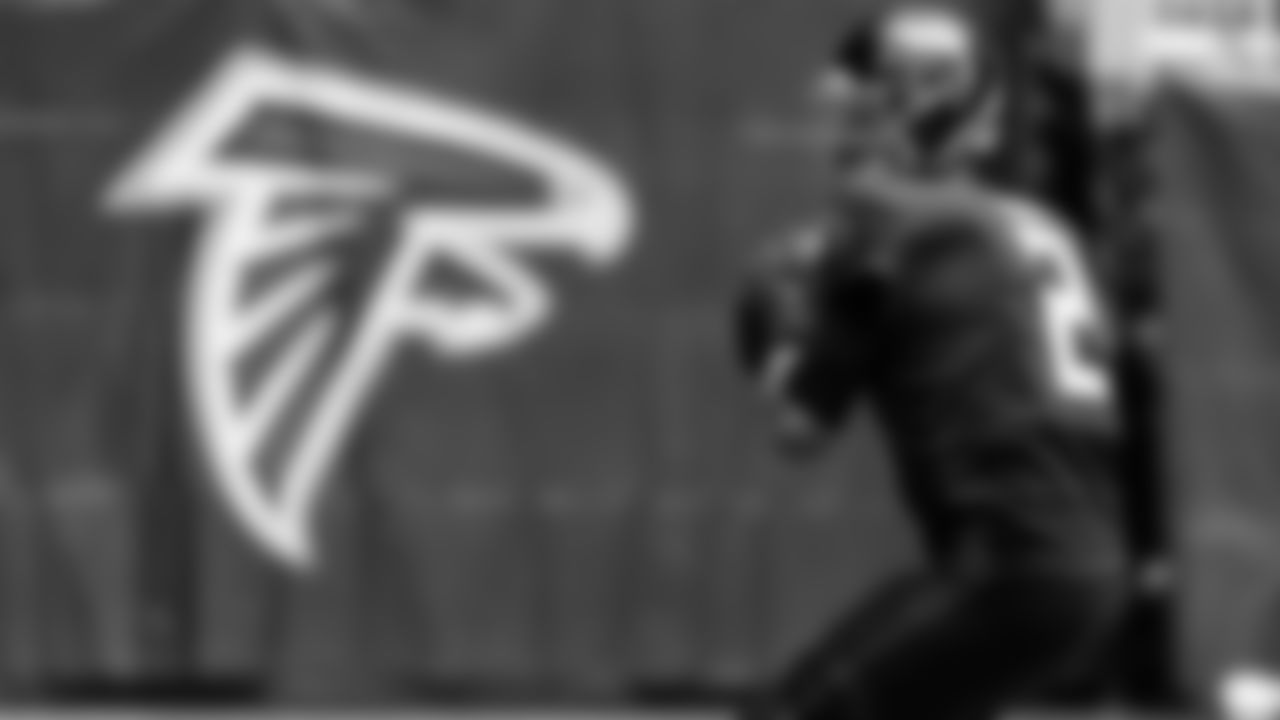
Atlanta Falcons quarterback Matt Ryan #2 warms up before the game against the Detroit Lions on October 25, 2020. (Photo by Rob Foldy/Atlanta Falcons)
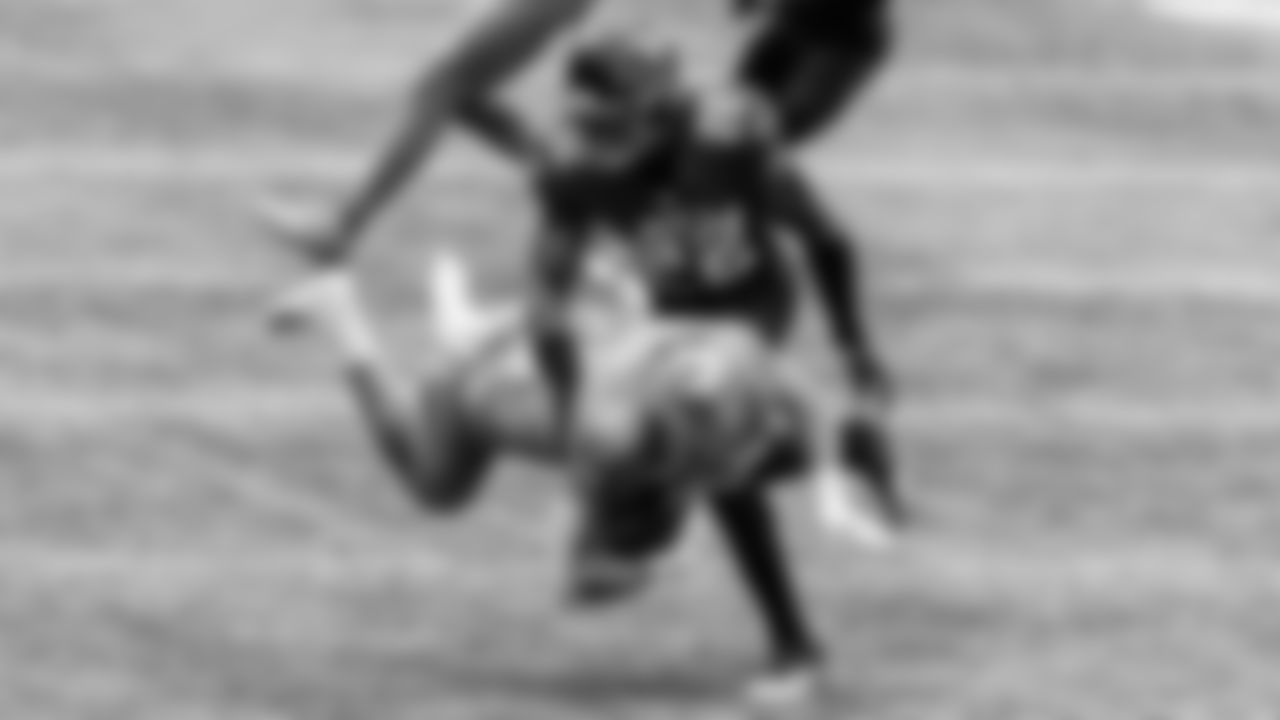
Atlanta Falcons strong safety Keanu Neal #22 in action during the first quarter against the Detroit Lions on October 25, 2020. (Photo by Adam Hagy/Atlanta Falcons)
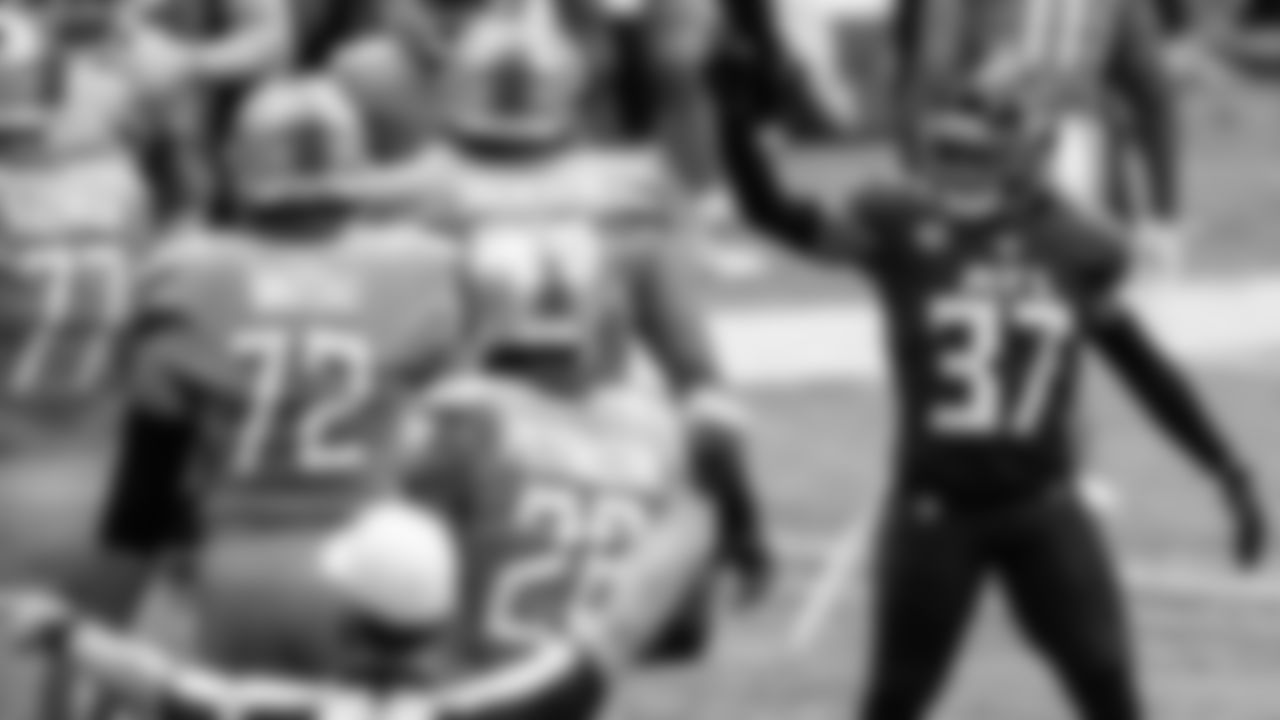
Atlanta Falcons free safety Ricardo Allen #37 gestures during the first half against the Detroit Lions on October 25, 2020. (Photo by Kyle Hess/Atlanta Falcons)
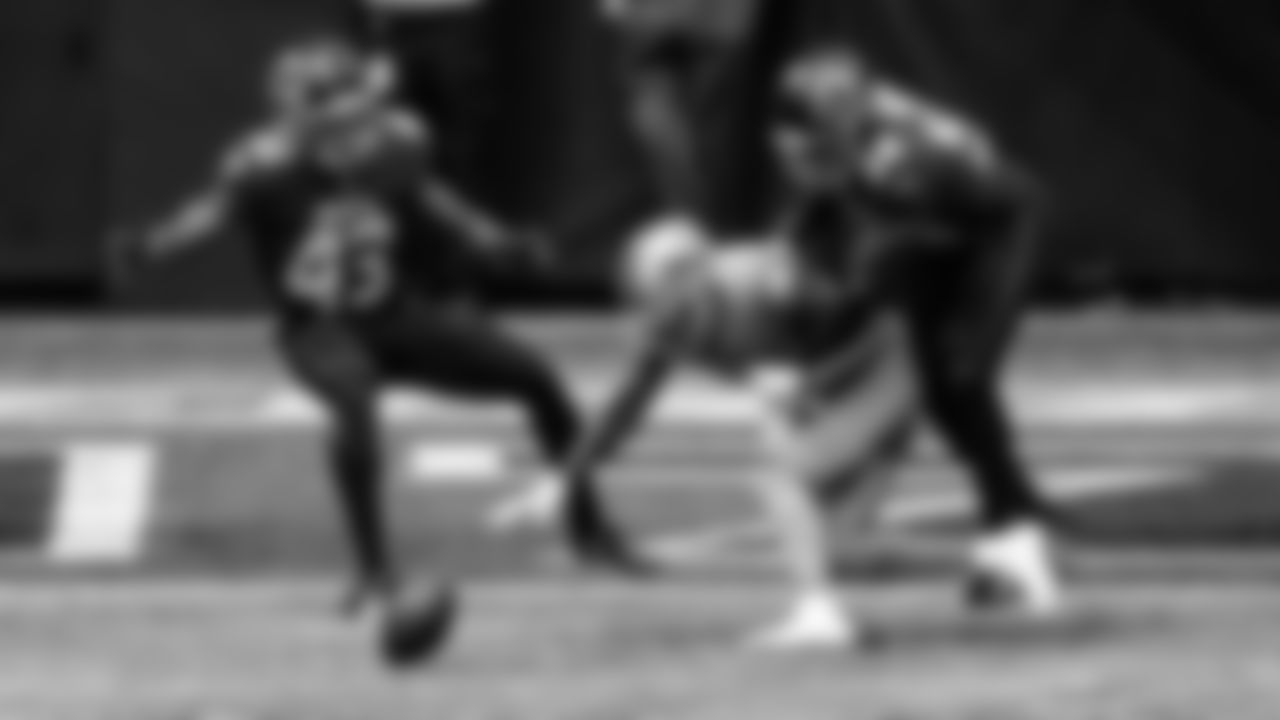
Atlanta Falcons linebacker Foye Oluokun #54 makes a stop on the goal line during the first half against the Detroit Lions on October 25, 2020. (Photo by Kyle Hess/Atlanta Falcons)
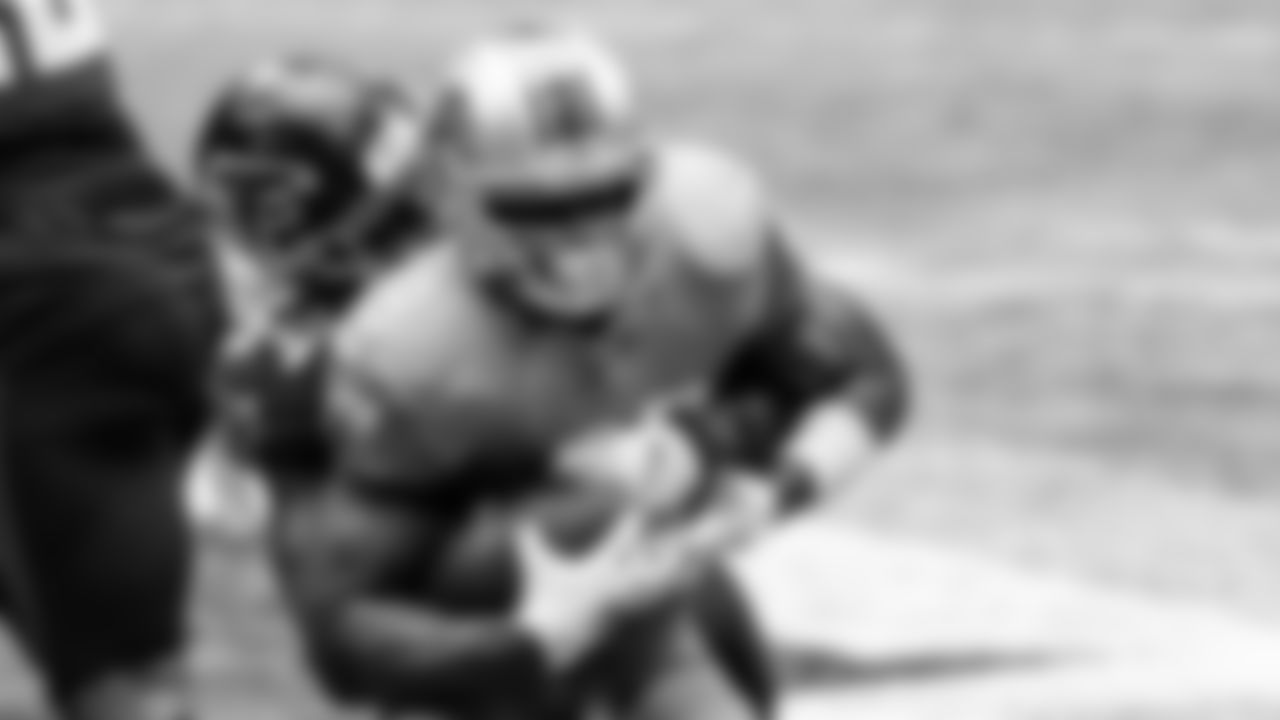
Atlanta Falcons linebacker Foye Oluokun #54 makes a tackle during the first half against the Detroit Lions on October 25, 2020. (Photo by Kyle Hess/Atlanta Falcons)

Atlanta Falcons cornerback A.J. Terrell #24 is tackles Detroit Lions quarterback Matthew Stafford #9 during the first quarter against the Detroit Lions on October 25, 2020. (Photo by Rob Foldy/Atlanta Falcons)

Atlanta Falcons cornerback A.J. Terrell #24 runs over a Rise Up & Vote decal during pregame before the Atlanta Falcons face the Detroit Lions on October 25, 2020. (Photo by Dakota Williams/Atlanta Falcons)

Atlanta Falcons strong safety Keanu Neal #22 in action during the first quarter against the Detroit Lions on October 25, 2020. (Photo by Adam Hagy/Atlanta Falcons)

Atlanta Falcons wide receiver Julio Jones #11warms up before the game against the Detroit Lions on October 25, 2020. (Photo by Adam Hagy/Atlanta Falcons)

Atlanta Falcons wide receiver Julio Jones #11 is shown in the tunnel before the game against the Detroit Lions on October 25, 2020. (Photo by Adam Hagy/Atlanta Falcons)

Atlanta Falcons strong safety Keanu Neal #22 makes a tackle during the first half against the Detroit Lions on October 25, 2020. (Photo by Kyle Hess/Atlanta Falcons)

Atlanta Falcons wide receiver Calvin Ridley #18 is shown during warm up before the game against the Detroit Lions on October 25, 2020. (Photo by Adam Hagy/Atlanta Falcons)

Atlanta Falcons wide receiver Calvin Ridley #18 is shown during warm up before the game against the Detroit Lions on October 25, 2020. (Photo by Adam Hagy/Atlanta Falcons)

Atlanta Falcons cornerback A.J. Terrell #24 and wide receiver Calvin Ridley #18 are shown during warm up before the game against the Detroit Lions on October 25, 2020. (Photo by Adam Hagy/Atlanta Falcons)
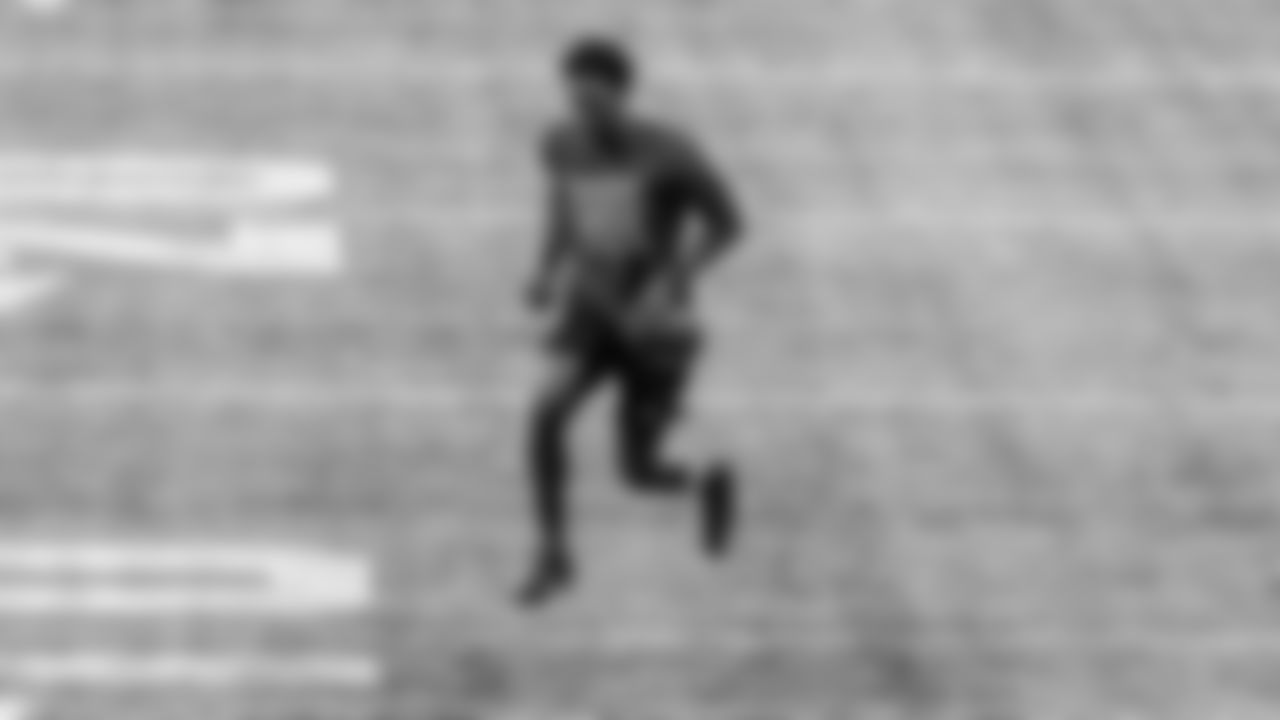
Atlanta Falcons wide receiver Calvin Ridley #18 is shown during warm up before the game against the Detroit Lions on October 25, 2020. (Photo by Adam Hagy/Atlanta Falcons)

Atlanta Falcons defensive tackle Jacob Tuioti-Mariner #91 with a Detroit Lions players during warm ups before the game against the Detroit Lions on October 25, 2020. (Photo by Adam Hagy/Atlanta Falcons)

Atlanta Falcons wide receiver Julio Jones #11 is shown during warm up before the game against the Detroit Lions on October 25, 2020. (Photo by Adam Hagy/Atlanta Falcons)
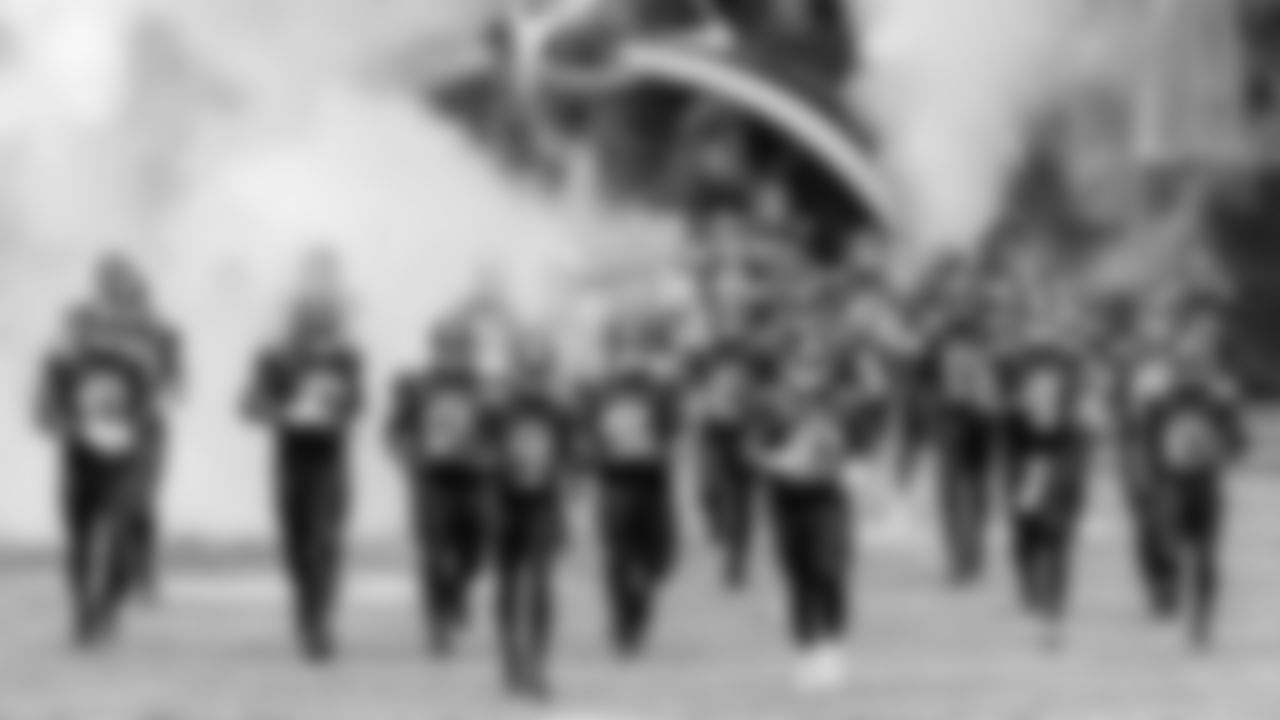
Atlanta Falcons take the field before the game against the Detroit Lions on October 25, 2020. (Photo by Adam Hagy/Atlanta Falcons)

Atlanta Falcons wide receiver Julio Jones #11warms up before the game against the Detroit Lions on October 25, 2020. (Photo by Adam Hagy/Atlanta Falcons)

Atlanta Falcons players is shown wearing Rise Up & Vote Cleats during warm up before the game against the Detroit Lions on October 25, 2020. (Photo by Adam Hagy/Atlanta Falcons)

Atlanta Falcons wide receiver Julio Jones #11 takes the field before the game against the Detroit Lions on October 25, 2020. (Photo by Adam Hagy/Atlanta Falcons)

Atlanta Falcons quarterback Matt Ryan #2 warms up before the game against the Detroit Lions on October 25, 2020. (Photo by AJ Reynolds/Atlanta Falcons)

Atlanta Falcons Owber Arthur M Blank waves to fans before the game against the Detroit Lions on October 25, 2020. (Photo by Adam Hagy/Atlanta Falcons)

Atlanta Falcons cornerback Isaiah Oliver #26 warms up before the game against the Detroit Lions on October 25, 2020. (Photo by AJ Reynolds/Atlanta Falcons)
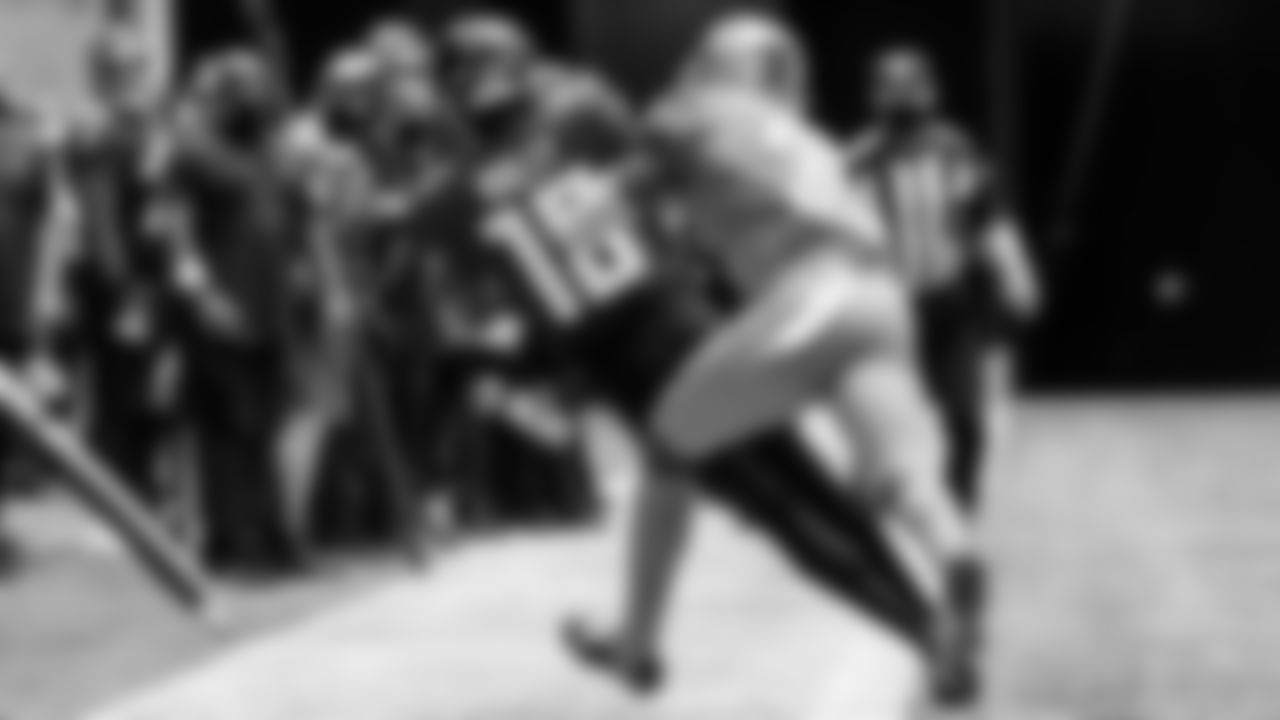
Atlanta Falcons wide receiver Calvin Ridley #18 in action during the second quarter against the Detroit Lions on October 25, 2020. (Photo by Rob Foldy/Atlanta Falcons)

Atlanta Falcons linebacker Edmond Robinson #46 warms up before the game against the Detroit Lions on October 25, 2020. (Photo by AJ Reynolds/Atlanta Falcons)

Atlanta Falcons quarterback Matt Ryan #2 warms up before the game against the Detroit Lions on October 25, 2020. (Photo by AJ Reynolds/Atlanta Falcons)

Atlanta Falcons linebacker Edmond Robinson #46 warms up before the game against the Detroit Lions on October 25, 2020. (Photo by AJ Reynolds/Atlanta Falcons)

Atlanta Falcons defensive back Kendall Sheffield #20 warms up before the game against the Detroit Lions on October 25, 2020. (Photo by AJ Reynolds/Atlanta Falcons)

Atlanta Falcons huddle up before the game against the Detroit Lions on October 25, 2020. (Photo by AJ Reynolds/Atlanta Falcons)

Atlanta Falcons running back Todd Gurley #21 warms up before the game against the Detroit Lions on October 25, 2020. (Photo by AJ Reynolds/Atlanta Falcons)

Fans are shown during the first quarter against the Detroit Lions on October 25, 2020. (Photo by Adam Hagy/Atlanta Falcons)

A tribute to Vaughn McClure is shown on the Halo Board during the first quarter against the Detroit Lions on October 25, 2020. (Photo by AJ Reynolds/Atlanta Falcons)

Atlanta Falcons wide receiver Russell Gage #83 warms up before the game against the Detroit Lions on October 25, 2020. (Photo by AJ Reynolds/Atlanta Falcons)

Atlanta Falcons cornerback A.J. Terrell #24 runs over a Rise Up & Vote decal during pregame before the Atlanta Falcons face the Detroit Lions on October 25, 2020. (Photo by Dakota Williams/Atlanta Falcons)

Atlanta Falcons quarterback Matt Ryan #2 fist bumps Atlanta Falcons coach coach Mayur Chaudhari during warm ups before the game against the Detroit Lions on October 25, 2020. (Photo by AJ Reynolds/Atlanta Falcons)
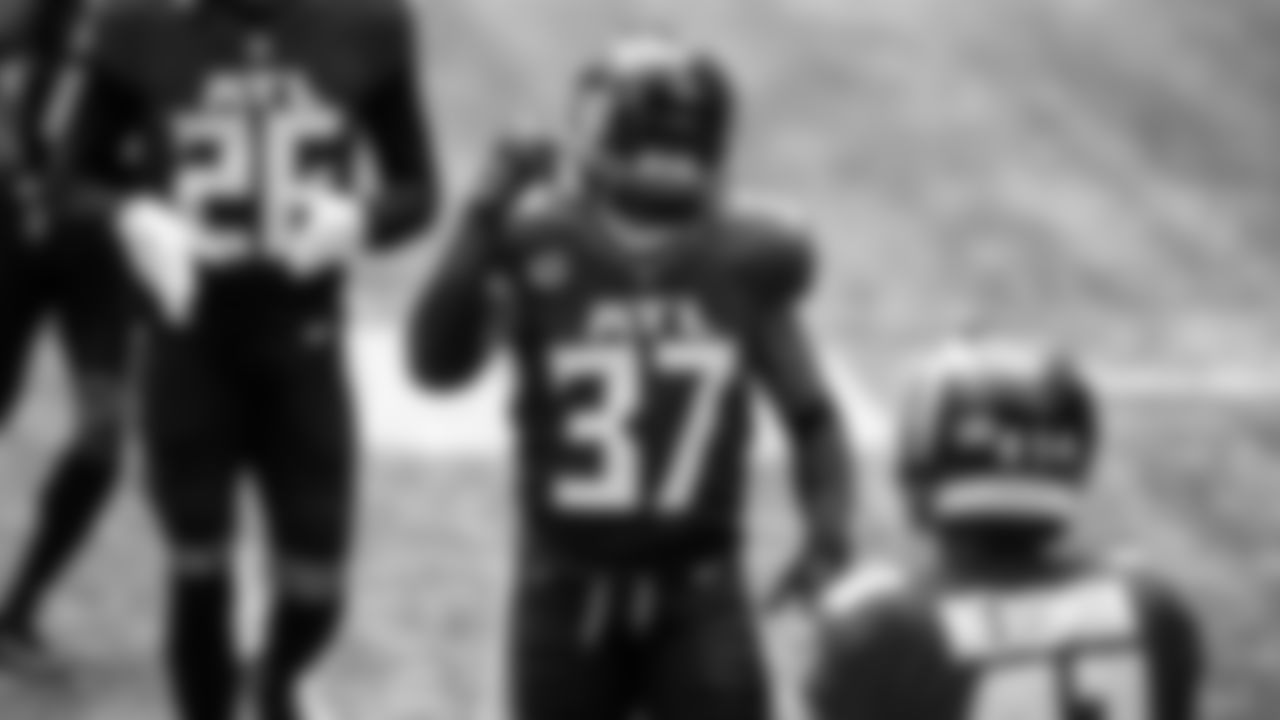
Atlanta Falcons free safety Ricardo Allen #37 is shown during warm ups before the game against the Detroit Lions on October 25, 2020. (Photo by AJ Reynolds/Atlanta Falcons)

The Atlanta Falcons drumlins performs during pregame before the Atlanta Falcons face the Detroit Lions on October 25, 2020. (Photo by Dakota Williams/Atlanta Falcons)

Dr. Bernice King pulls the train horn during pregame against the Detroit Lions on October 25, 2020. (Photo by Dakota Williams/Atlanta Falcons)

Atlanta Falcons tight end Hayden Hurst #81 gestures before the game against the Detroit Lions on October 25, 2020. (Photo by Adam Hagy/Atlanta Falcons)

The Atlanta Falcons huddle during pregame before the Atlanta Falcons face the Detroit Lions on October 25, 2020. (Photo by Dakota Williams/Atlanta Falcons)
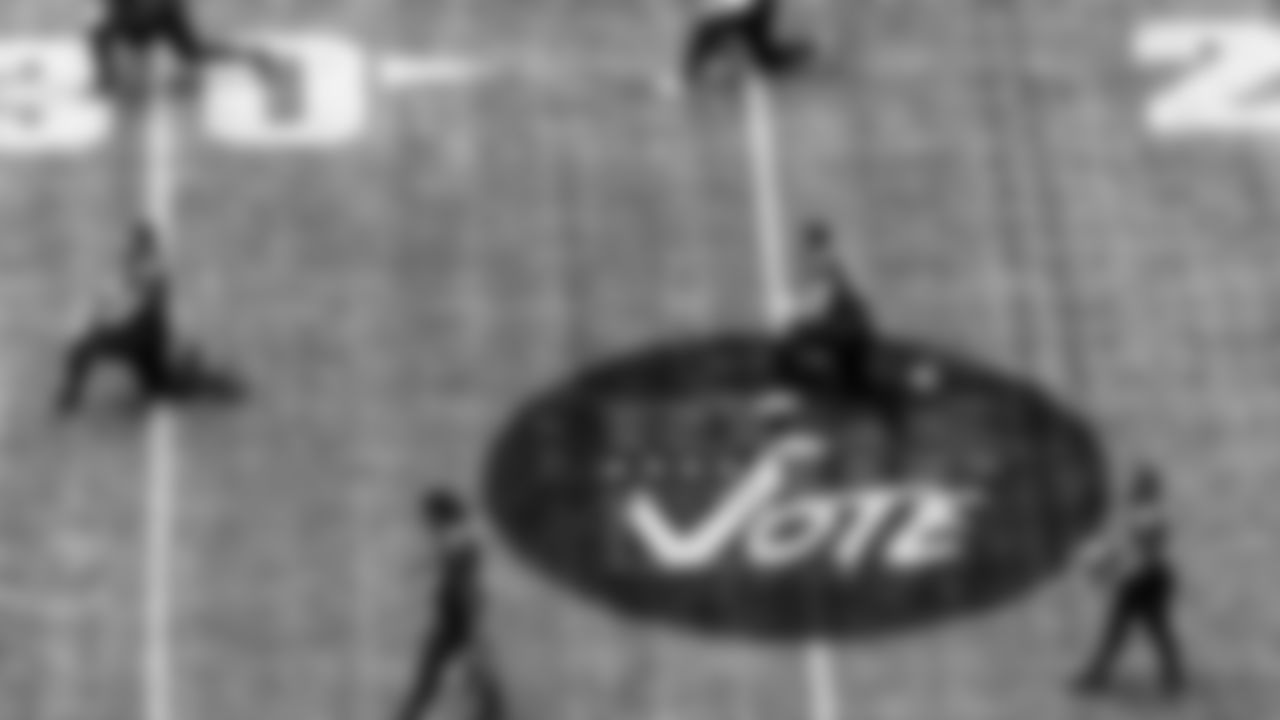
Atlanta Falcons tight end Luke Stocker #88 stretches over a Rise Up & Vote decal during pregame before the Atlanta Falcons face the Detroit Lions on October 25, 2020. (Photo by Dakota Williams/Atlanta Falcons)

The Atlanta Falcons drumlins performs during pregame before the Atlanta Falcons face the Detroit Lions on October 25, 2020. (Photo by Dakota Williams/Atlanta Falcons)

Dr. Bernice King pulls the train horn during pregame against the Detroit Lions on October 25, 2020. (Photo by Dakota Williams/Atlanta Falcons)

The Atlanta Falcons run out during pregame against the Detroit Lions on October 25, 2020. (Photo by Dakota Williams/Atlanta Falcons)

The offensive line huddles up during pregame before the Atlanta Falcons face the Detroit Lions on October 25, 2020. (Photo by Dakota Williams/Atlanta Falcons)

The Atlanta Falcons run out of the tunnel during pregame before the Atlanta Falcons face the Detroit Lions on October 25, 2020. (Photo by Dakota Williams/Atlanta Falcons)
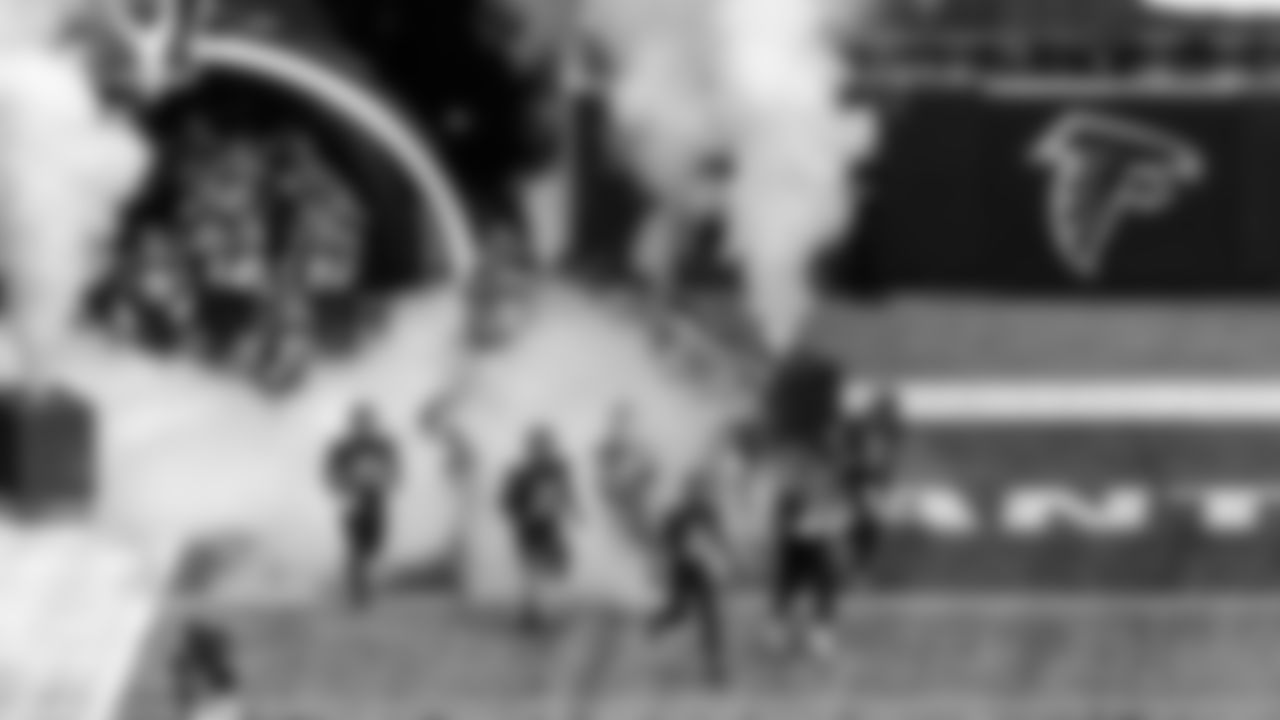
The Atlanta Falcons run out during pregame against the Detroit Lions on October 25, 2020. (Photo by Dakota Williams/Atlanta Falcons)

Dr. Bernice King pulls the train horn during pregame against the Detroit Lions on October 25, 2020. (Photo by Dakota Williams/Atlanta Falcons)

The Atlanta Falcons drumlins performs during pregame before the Atlanta Falcons face the Detroit Lions on October 25, 2020. (Photo by Dakota Williams/Atlanta Falcons)

Atlanta Falcons offensive tackle Kaleb McGary #76 runs over a Rise Up & Vote decal during pregame before the Atlanta Falcons face the Detroit Lions on October 25, 2020. (Photo by Dakota Williams/Atlanta Falcons)

Dr. Bernice King pulls the train horn during pregame against the Detroit Lions on October 25, 2020. (Photo by Dakota Williams/Atlanta Falcons)

The Atlanta Falcons drumlins performs during pregame before the Atlanta Falcons face the Detroit Lions on October 25, 2020. (Photo by Dakota Williams/Atlanta Falcons)

Dr. Bernice King pulls the train horn during pregame against the Detroit Lions on October 25, 2020. (Photo by Dakota Williams/Atlanta Falcons)

Atlanta Falcons cornerback Blidi Wreh-Wilson #33 warms up during pregame before facing the Detroit Lions on October 25, 2020. (Photo by Kyle Hess/Atlanta Falcons)

Atlanta Falcons defensive end Takkarist McKinley #98 warms up during pregame before facing the Detroit Lions on October 25, 2020. (Photo by Kyle Hess/Atlanta Falcons)

Atlanta Falcons defensive end Takkarist McKinley #98 warms up during pregame before facing the Detroit Lions on October 25, 2020. (Photo by Kyle Hess/Atlanta Falcons)

Atlanta Falcons cornerback Blidi Wreh-Wilson #33 warms up during pregame before facing the Detroit Lions on October 25, 2020. (Photo by Kyle Hess/Atlanta Falcons)
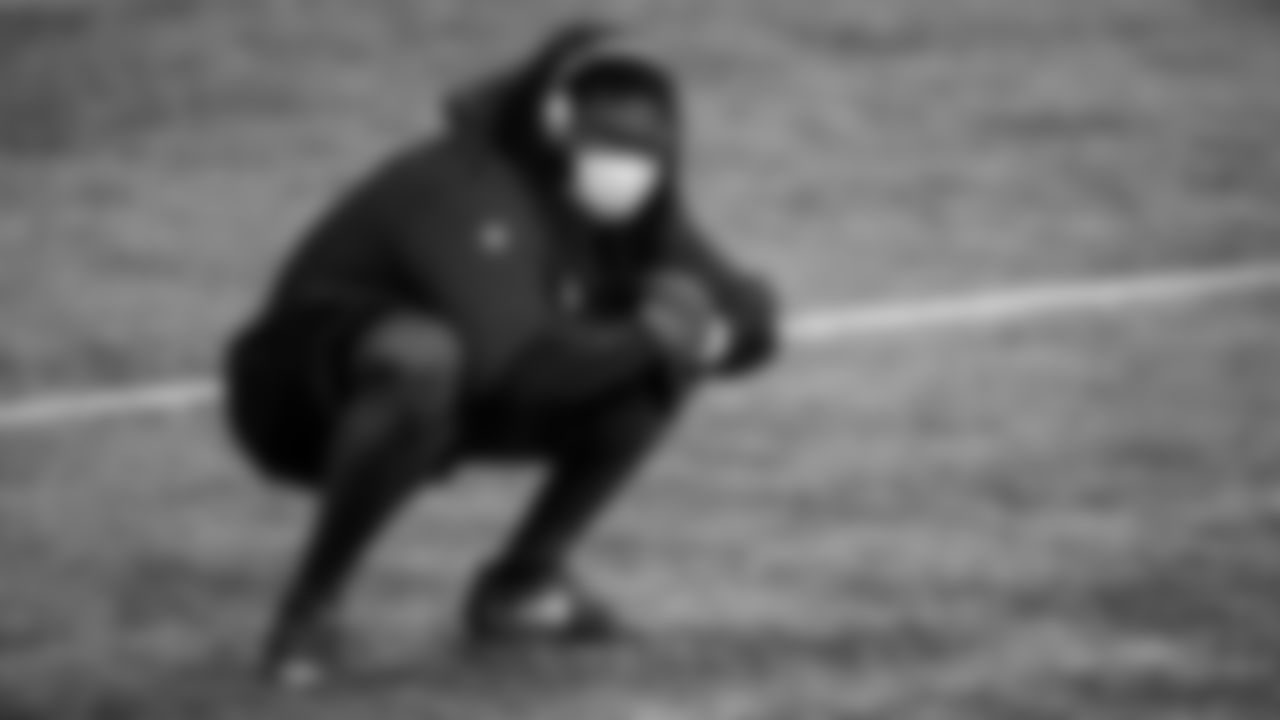
Atlanta Falcons defensive end Takkarist McKinley #98 warms up during pregame before facing the Detroit Lions on October 25, 2020. (Photo by Kyle Hess/Atlanta Falcons)

Cleats worn by Atlanta Falcons center Alex Mack #51 during pregame before facing the Detroit Lions on October 25, 2020. (Photo by Kyle Hess/Atlanta Falcons)

Atlanta Falcons wide receiver Julio Jones #11 warms up during pregame before facing the Detroit Lions on October 25, 2020. (Photo by Kyle Hess/Atlanta Falcons)

Atlanta Falcons wide receiver Julio Jones #11 warms up during pregame before facing the Detroit Lions on October 25, 2020. (Photo by Kyle Hess/Atlanta Falcons)

Atlanta Falcons cornerback A.J. Terrell #24 warms up during pregame before facing the Detroit Lions on October 25, 2020. (Photo by Kyle Hess/Atlanta Falcons)

Atlanta Falcons wide receiver Olamide Zaccheaus #17 warms up during pregame before facing the Detroit Lions on October 25, 2020. (Photo by Kyle Hess/Atlanta Falcons)

Cleats worn by Atlanta Falcons center Alex Mack #51 during pregame before facing the Detroit Lions on October 25, 2020. (Photo by Kyle Hess/Atlanta Falcons)

Cleats worn during pregame before facing the Detroit Lions on October 25, 2020. (Photo by Kyle Hess/Atlanta Falcons)

Atlanta Falcons wide receiver Julio Jones #11 warms up during pregame before facing the Detroit Lions on October 25, 2020. (Photo by Kyle Hess/Atlanta Falcons)

Atlanta Falcons wide receiver Calvin Ridley #18 warms up during pregame before facing the Detroit Lions on October 25, 2020. (Photo by Kyle Hess/Atlanta Falcons)

Atlanta Falcons quarterback Matt Ryan #2 warms up during pregame before facing the Detroit Lions on October 25, 2020. (Photo by Kyle Hess/Atlanta Falcons)

Atlanta Falcons safety Sharrod Neasman #41 warms up during pregame before facing the Detroit Lions on October 25, 2020. (Photo by Kyle Hess/Atlanta Falcons)

Atlanta Falcons center Matt Hennessy #61 warms up during pregame before facing the Detroit Lions on October 25, 2020. (Photo by Kyle Hess/Atlanta Falcons)

Atlanta Falcons quarterback Matt Ryan #2 warms up during pregame before facing the Detroit Lions on October 25, 2020. (Photo by Kyle Hess/Atlanta Falcons)

Cleats worn during pregame before facing the Detroit Lions on October 25, 2020. (Photo by Kyle Hess/Atlanta Falcons)

Atlanta Falcons quarterback Matt Ryan #2 and quarterback Matt Schaub #8 talk during pregame against the Detroit Lions on October 25, 2020. (Photo by Kyle Hess/Atlanta Falcons)

Atlanta Falcons head coach Raheem Morris looks on during pregame against the Detroit Lions on October 25, 2020. (Photo by Kyle Hess/Atlanta Falcons)

Atlanta Falcons running back Ito Smith #25 hugs former teammate Detroit Lions wide receiver Marvin Hall #17 during pregame against the Detroit Lions on October 25, 2020. (Photo by Kyle Hess/Atlanta Falcons)

Falcons fans during pregame against the Detroit Lions on October 25, 2020. (Photo by Kyle Hess/Atlanta Falcons)

Atlanta Falcons running back Brian Hill #23 hugs former teammate Detroit Lions wide receiver Marvin Hall #17 during pregame against the Detroit Lions on October 25, 2020. (Photo by Kyle Hess/Atlanta Falcons)

Atlanta Falcons running back Brian Hill #23 runs during pregame against the Detroit Lions on October 25, 2020. (Photo by Kyle Hess/Atlanta Falcons)

Atlanta Falcons wide receiver Olamide Zaccheaus #17 looks on during pregame against the Detroit Lions on October 25, 2020. (Photo by Kyle Hess/Atlanta Falcons)

Rise Up & Vote cleats worn by an Atlanta Falcons player during pregame against the Detroit Lions on October 25, 2020. (Photo by Kyle Hess/Atlanta Falcons)

Atlanta Falcons wide receiver Julio Jones #11 gestures during pregame against the Detroit Lions on October 25, 2020. (Photo by Kyle Hess/Atlanta Falcons)

Rise Up & Vote cleats worn by an Atlanta Falcons player during pregame against the Detroit Lions on October 25, 2020. (Photo by Kyle Hess/Atlanta Falcons)

Atlanta Falcons running back Brian Hill #23 makes a catch during pregame against the Detroit Lions on October 25, 2020. (Photo by Kyle Hess/Atlanta Falcons)

Atlanta Falcons wide receiver Brandon Powell #15, wide receiver Calvin Ridley #18 and wide receiver Julio Jones #11 huddle up during pregame against the Detroit Lions on October 25, 2020. (Photo by Kyle Hess/Atlanta Falcons)

Atlanta Falcons wide receiver Julio Jones #11 looks on during pregame against the Detroit Lions on October 25, 2020. (Photo by Kyle Hess/Atlanta Falcons)

Atlanta Falcons wide receiver Christian Blake #13 and Atlanta Falcons wide receiver Russell Gage #83 talk during pregame against the Detroit Lions on October 25, 2020. (Photo by Kyle Hess/Atlanta Falcons)

Atlanta Falcons running back Todd Gurley #21 looks on during pregame against the Detroit Lions on October 25, 2020. (Photo by Kyle Hess/Atlanta Falcons)

Atlanta Falcons wide receiver Julio Jones #11 makes a catch during pregame against the Detroit Lions on October 25, 2020. (Photo by Kyle Hess/Atlanta Falcons)

Atlanta Falcons running back Brian Hill #23 makes a catch during pregame against the Detroit Lions on October 25, 2020. (Photo by Kyle Hess/Atlanta Falcons)

The Atlanta Falcons huddle up during pregame against the Detroit Lions on October 25, 2020. (Photo by Kyle Hess/Atlanta Falcons)

Atlanta Falcons wide receiver Calvin Ridley #18 gestures during pregame against the Detroit Lions on October 25, 2020. (Photo by Kyle Hess/Atlanta Falcons)

Atlanta Falcons wide receiver Julio Jones #11 warms up during pregame before facing the Detroit Lions on October 25, 2020. (Photo by Kyle Hess/Atlanta Falcons)

Atlanta Falcons owner Arthur Blank gives a thumbs up during pregame against the Detroit Lions on October 25, 2020. (Photo by Kyle Hess/Atlanta Falcons)

Atlanta Falcons head coach Raheem Morris and wide receiver Julio Jones #11 are shown before the game against the Detroit Lions on October 25, 2020. (Photo by Rob Foldy/Atlanta Falcons)

Atlanta Falcons wide receiver Julio Jones #11 looks on during pregame against the Detroit Lions on October 25, 2020. (Photo by Kyle Hess/Atlanta Falcons)

Atlanta Falcons wide receiver Calvin Ridley #18 looks on during pregame against the Detroit Lions on October 25, 2020. (Photo by Kyle Hess/Atlanta Falcons)

Atlanta Falcons tight end Hayden Hurst #81 stretches during pregame against the Detroit Lions on October 25, 2020. (Photo by Kyle Hess/Atlanta Falcons)

Falcons fans cheer during pregame against the Detroit Lions on October 25, 2020. (Photo by Kyle Hess/Atlanta Falcons)

Atlanta Falcons kicker Younghoe Koo #7 looks on during pregame against the Detroit Lions on October 25, 2020. (Photo by Kyle Hess/Atlanta Falcons)

The Atlanta Falcons Cheerleaders perform during pregame against the Detroit Lions on October 25, 2020. (Photo by Kyle Hess/Atlanta Falcons)

Atlanta Falcons wide receiver Calvin Ridley #18 runs out of the tunnel during pregame against the Detroit Lions on October 25, 2020. (Photo by Kyle Hess/Atlanta Falcons)

Atlanta Falcons head coach Raheem Morris looks on during pregame against the Detroit Lions on October 25, 2020. (Photo by Kyle Hess/Atlanta Falcons)

Atlanta Falcons wide receiver Calvin Ridley #18 runs out of the tunnel during pregame against the Detroit Lions on October 25, 2020. (Photo by Kyle Hess/Atlanta Falcons)

Atlanta Falcons wide receiver Christian Blake #13 runs out of the tunnel during pregame against the Detroit Lions on October 25, 2020. (Photo by Kyle Hess/Atlanta Falcons)

The Atlanta Falcons huddle up during pregame against the Detroit Lions on October 25, 2020. (Photo by Kyle Hess/Atlanta Falcons)
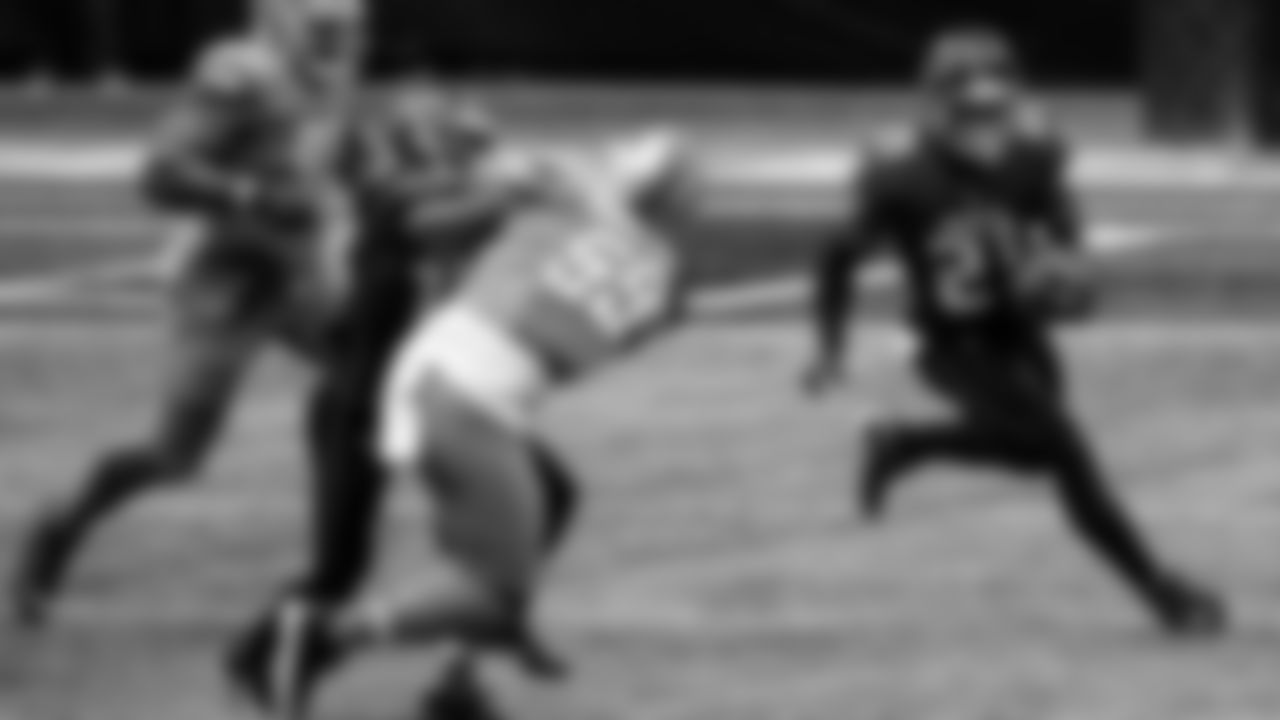
Atlanta Falcons running back Todd Gurley #21 runs the ball during the first half against the Detroit Lions on October 25, 2020. (Photo by Kyle Hess/Atlanta Falcons)
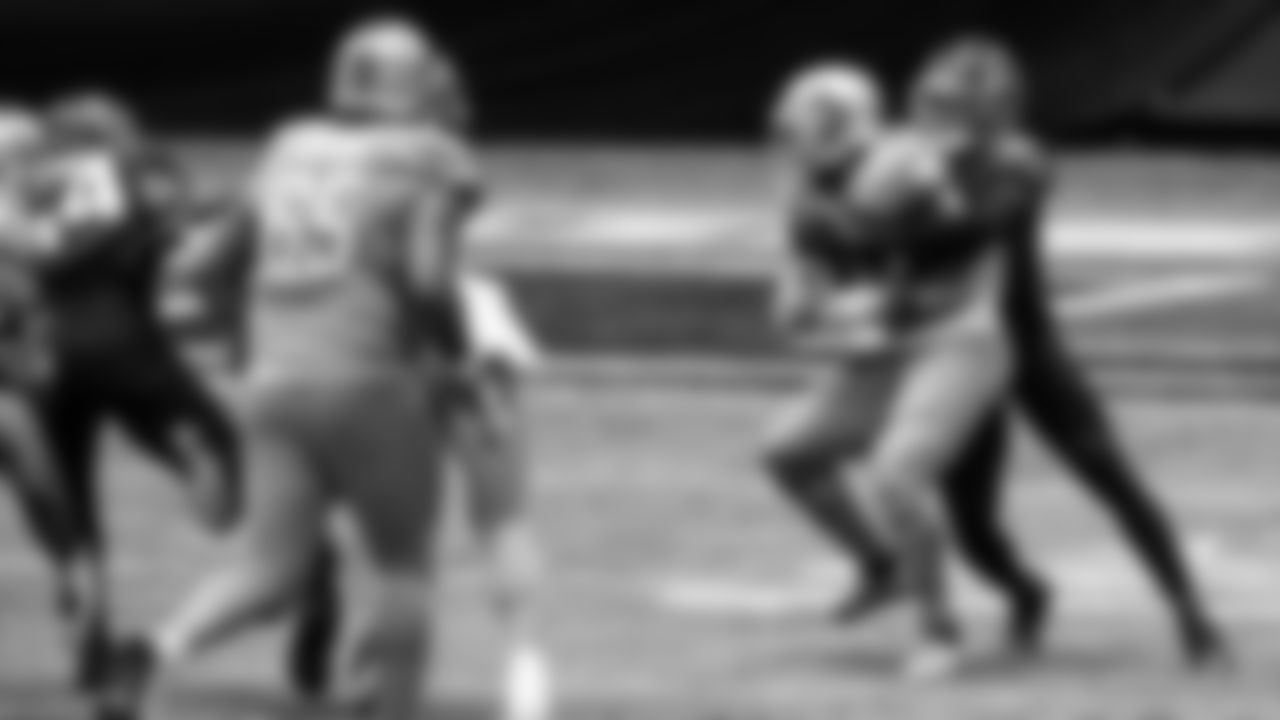
Atlanta Falcons free safety Ricardo Allen #37 makes a tackle during the first half against the Detroit Lions on October 25, 2020. (Photo by Kyle Hess/Atlanta Falcons)

Atlanta Falcons cornerback A.J. Terrell #24 celebrates with defensive end Allen Bailey #93 during the first half against the Detroit Lions on October 25, 2020. (Photo by Kyle Hess/Atlanta Falcons)

A security associate wears a mask while holding a sign for masks during the first half against the Detroit Lions on October 25, 2020. (Photo by Kyle Hess/Atlanta Falcons)

Cleats worm by Atlanta Falcons quarterback Matt Ryan #2 warms up before the game against the Detroit Lions on October 25, 2020. (Photo by Rob Foldy/Atlanta Falcons)
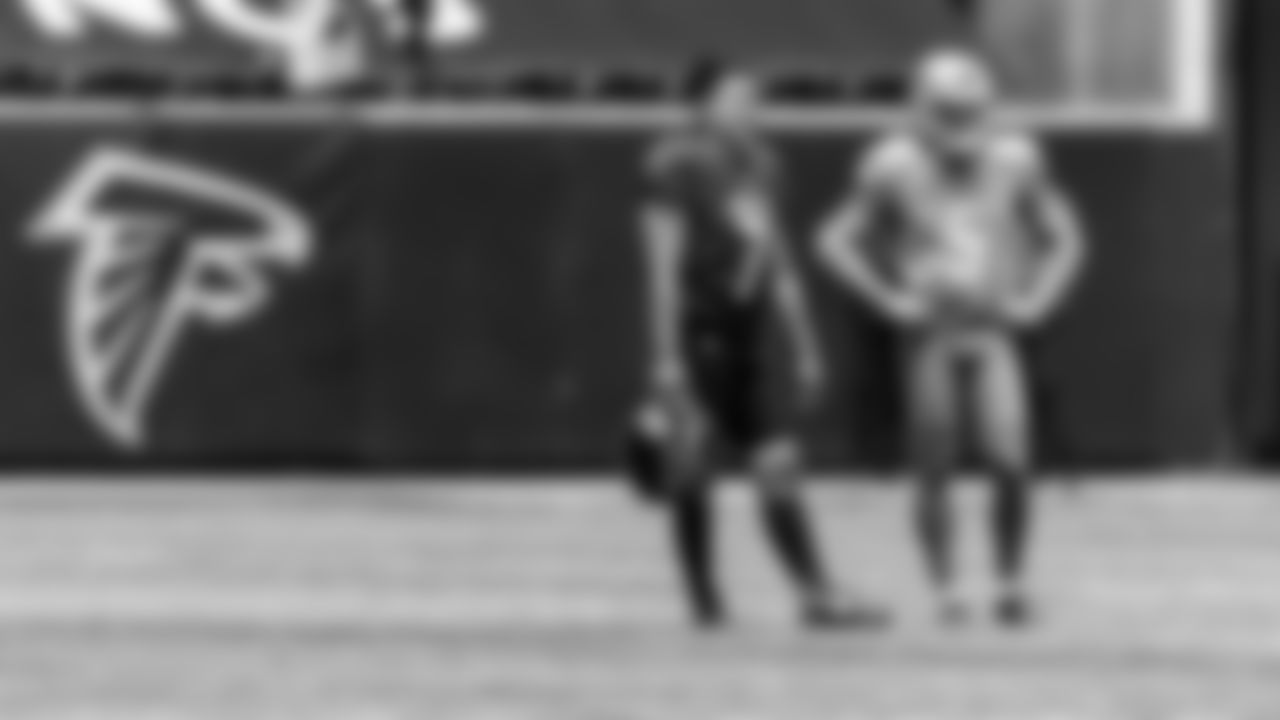
Atlanta Falcons kicker Younghoe Koo #7 and Detroit Lions kicker Matt Prater #5 are shown during warm ups before the against the Detroit Lions on October 25, 2020. (Photo by Rob Foldy/Atlanta Falcons)

Atlanta Falcons tight end Hayden Hurst #81 and defensive end Dante Fowler Jr. #56 are shown before the game against the Detroit Lions on October 25, 2020. (Photo by Rob Foldy/Atlanta Falcons)

Atlanta Falcons Owner Athru M Blank is shown before theme against the Detroit Lions on October 25, 2020. (Photo by Rob Foldy/Atlanta Falcons)

Atlanta Falcons linebacker Deion Jones #45 takes the field before the game against the Detroit Lions on October 25, 2020. (Photo by Rob Foldy/Atlanta Falcons)

Atlanta Falcons head coach Raheem Morris is shown before the game against the Detroit Lions on October 25, 2020. (Photo by Rob Foldy/Atlanta Falcons)

Atlanta Falcons Owner Athru M Blank is shown before theme against the Detroit Lions on October 25, 2020. (Photo by Rob Foldy/Atlanta Falcons)

Atlanta Falcons center Matt Hennessy #61 takes the field before the game against the Detroit Lions on October 25, 2020. (Photo by Rob Foldy/Atlanta Falcons)

Atlanta Falcons fullback Keith Smith #40 is shown before the game against the Detroit Lions on October 25, 2020. (Photo by Rob Foldy/Atlanta Falcons)

Atlanta Falcons running back Todd Gurley #21 is shown during warms up before the game against the Detroit Lions on October 25, 2020. (Photo by Rob Foldy/Atlanta Falcons)
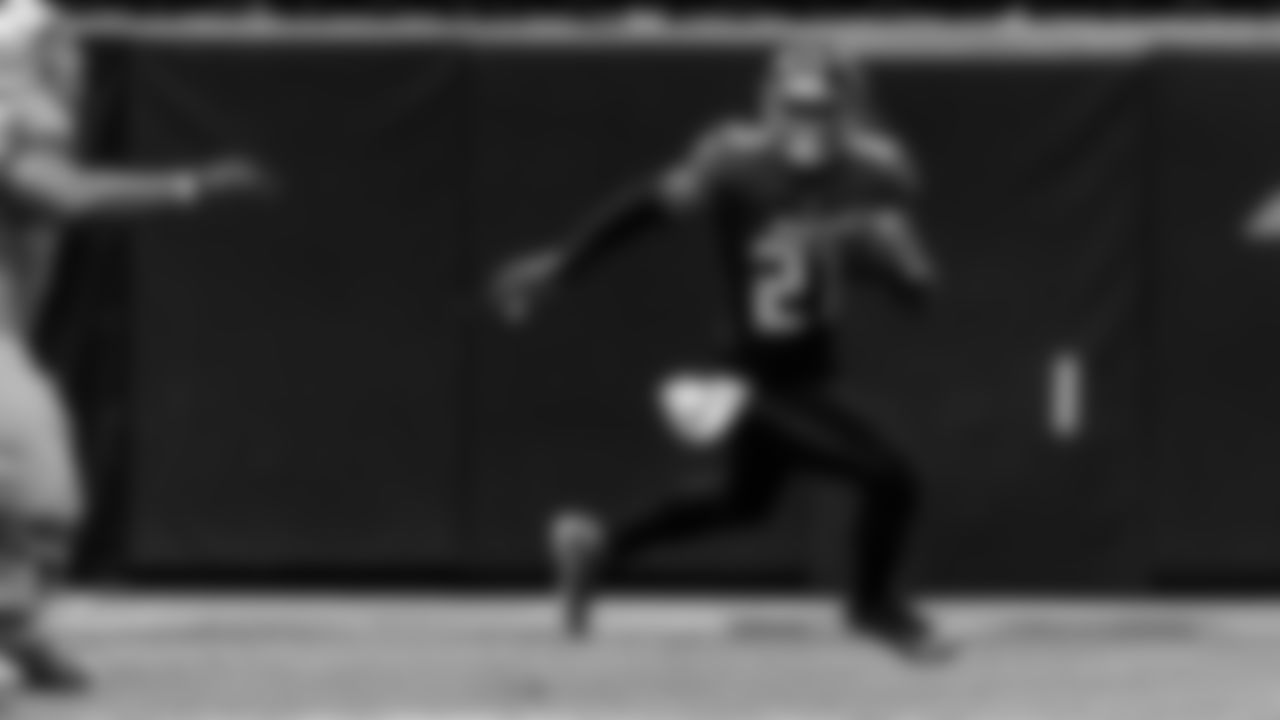
Atlanta Falcons running back Todd Gurley #21 in action during the first quarter of the game against the Detroit Lions on October 25, 2020. (Photo by Rob Foldy/Atlanta Falcons)

Atlanta Falcons center Matt Hennessy #61 snaps the ball during the first quarter against the Detroit Lions on October 25, 2020. (Photo by Rob Foldy/Atlanta Falcons)

Atlanta Falcons head coach Raheem Morris and wide receiver Julio Jones #11 are shown before the game against the Detroit Lions on October 25, 2020. (Photo by Rob Foldy/Atlanta Falcons)

Atlanta Falcons quarterback Matt Ryan #2 in action during the first quarter against the Detroit Lions on October 25, 2020. (Photo by \h2Rob Foldy/Atlanta Falcons)
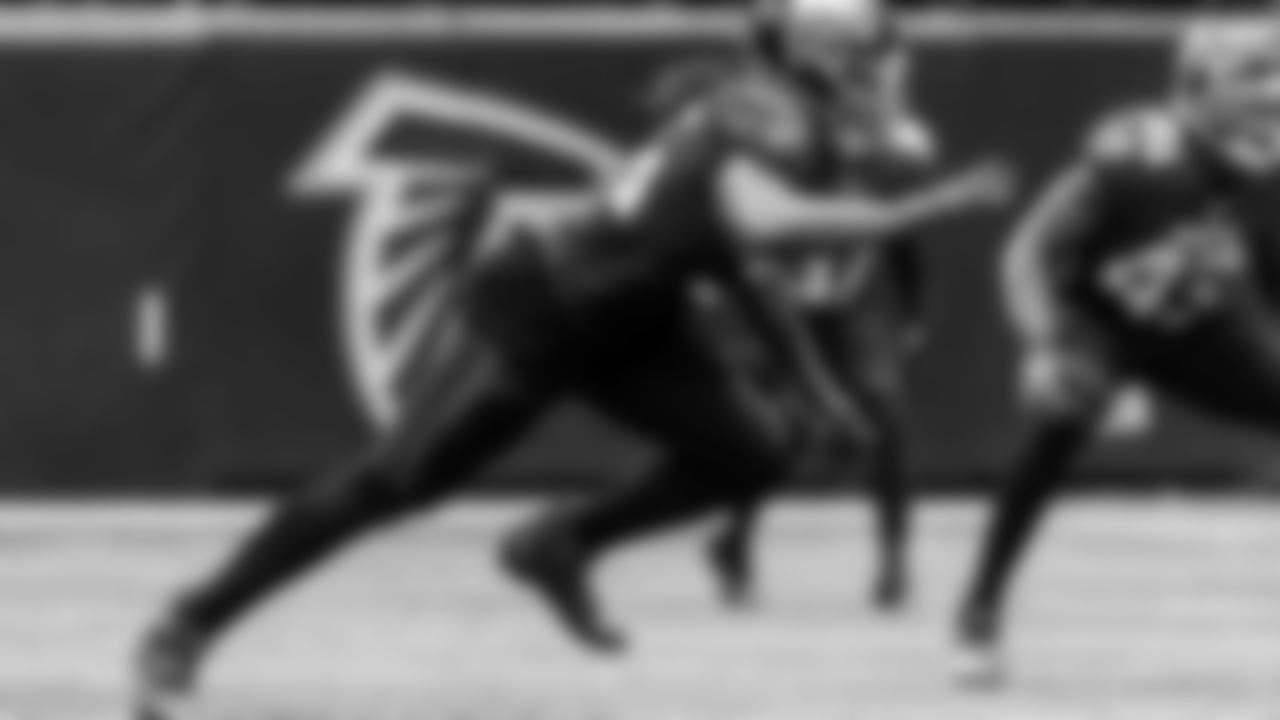
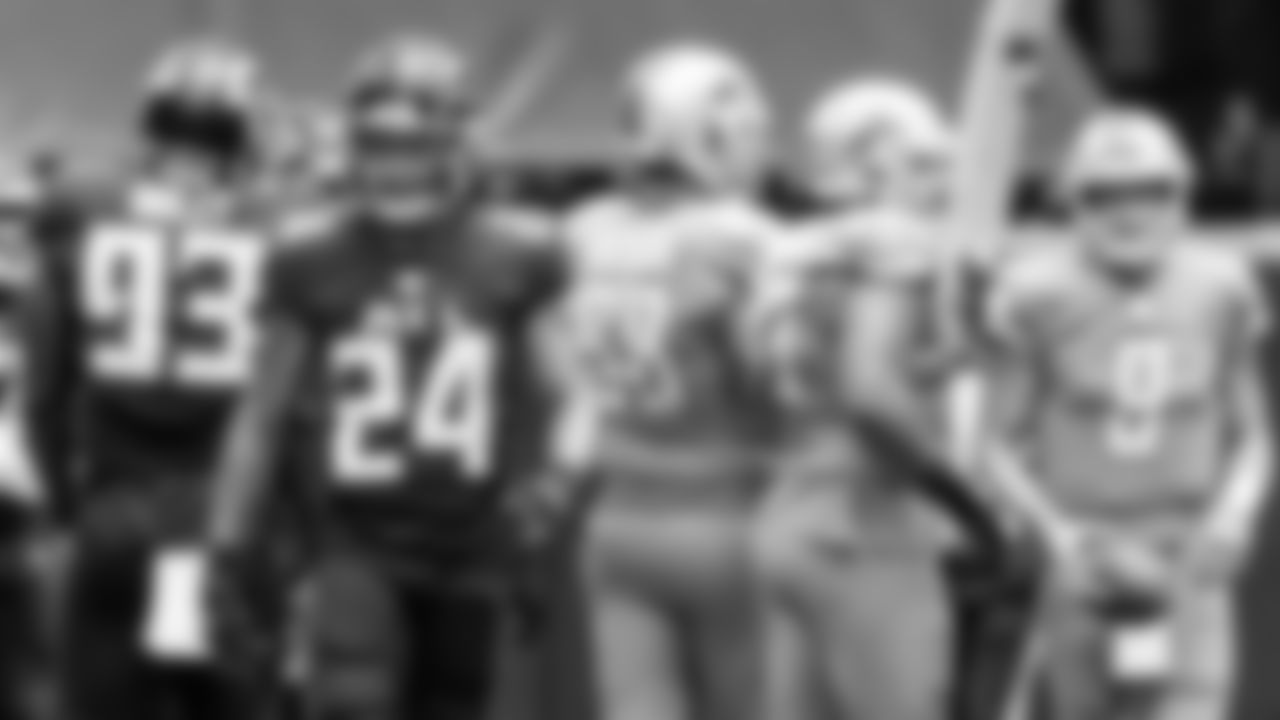
Atlanta Falcons cornerback A.J. Terrell #24 is shown after tackling Detroit Lions quarterback Matthew Stafford #9 during the first quarter against the Detroit Lions on October 25, 2020. (Photo by Rob Foldy/Atlanta Falcons)

Atlanta Falcons center Alex Mack #51 and Detroit Lions quarterback Matthew Stafford #9 are shown during the coin toss before the game against the Detroit Lions on October 25, 2020. (Photo by Rob Foldy/Atlanta Falcons)
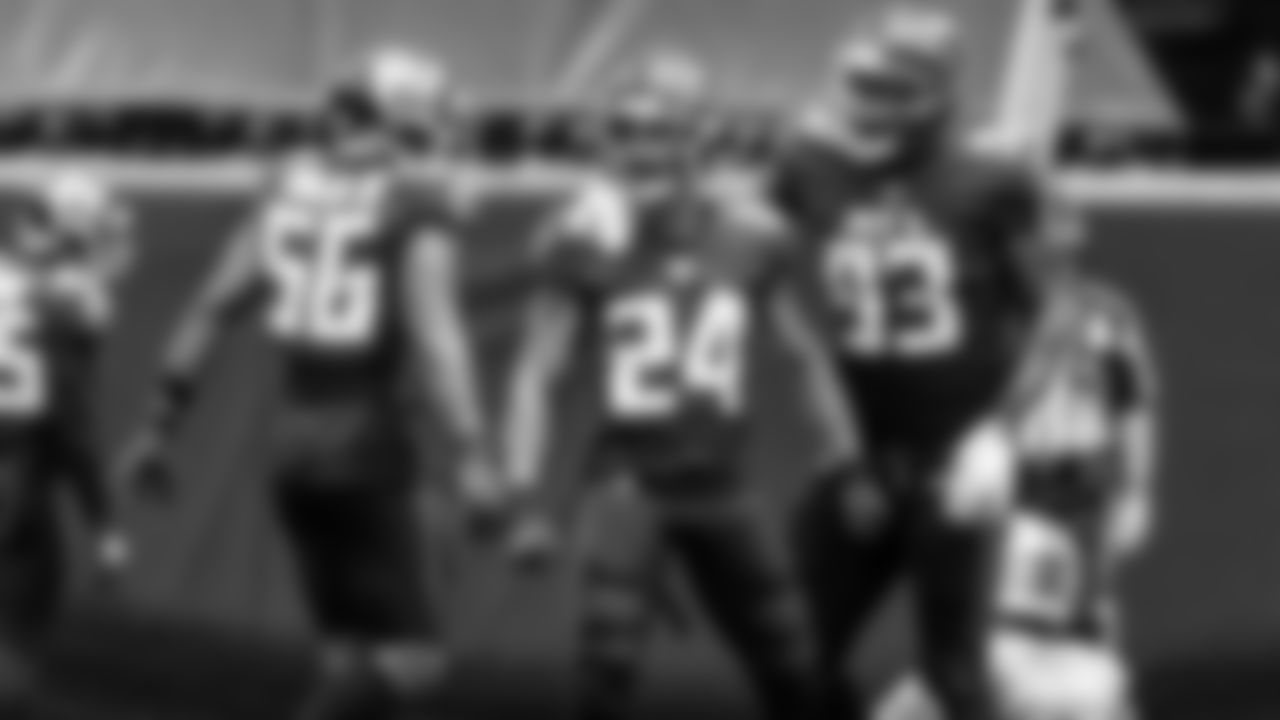

The Offensive Line is shown during the first quarter against the Detroit Lions on October 25, 2020. (Photo by Rob Foldy/Atlanta Falcons)

Atlanta Falcons defensive back Kendall Sheffield #20 warms up before the game against the Detroit Lions on October 25, 2020. (Photo by Rob Foldy/Atlanta Falcons)

Atlanta Falcons running back Todd Gurley #21 in action during the second quarter against the Detroit Lions on October 25, 2020. (Photo by Rob Foldy/Atlanta Falcons)

Atlanta Falcons quarterback Matt Ryan #2 in action during the second quarter against the Detroit Lions on October 25, 2020. (Photo by Adam Hagy/Atlanta Falcons)

Atlanta Falcons quarterback Matt Ryan #2 in action during the second quarter against the Detroit Lions on October 25, 2020. (Photo by Adam Hagy/Atlanta Falcons)
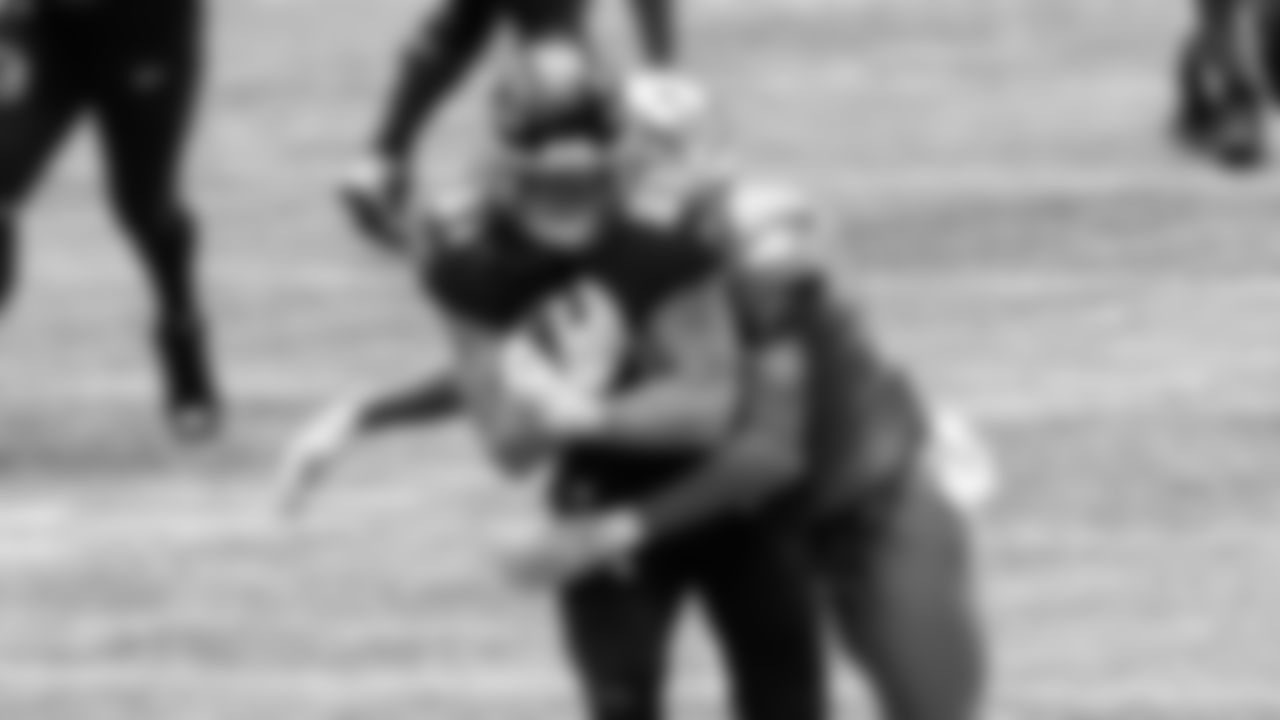
Atlanta Falcons tight end Hayden Hurst #81 in action during the second quarter against the Detroit Lions on October 25, 2020. (Photo by Adam Hagy/Atlanta Falcons)

A fan waves a Falcon flag during the second quarter against the Detroit Lions on October 25, 2020. (Photo by Adam Hagy/Atlanta Falcons)

Atlanta Falcons wide receiver Calvin Ridley #18 in action during the second quarter against the Detroit Lions on October 25, 2020. (Photo by Adam Hagy/Atlanta Falcons)
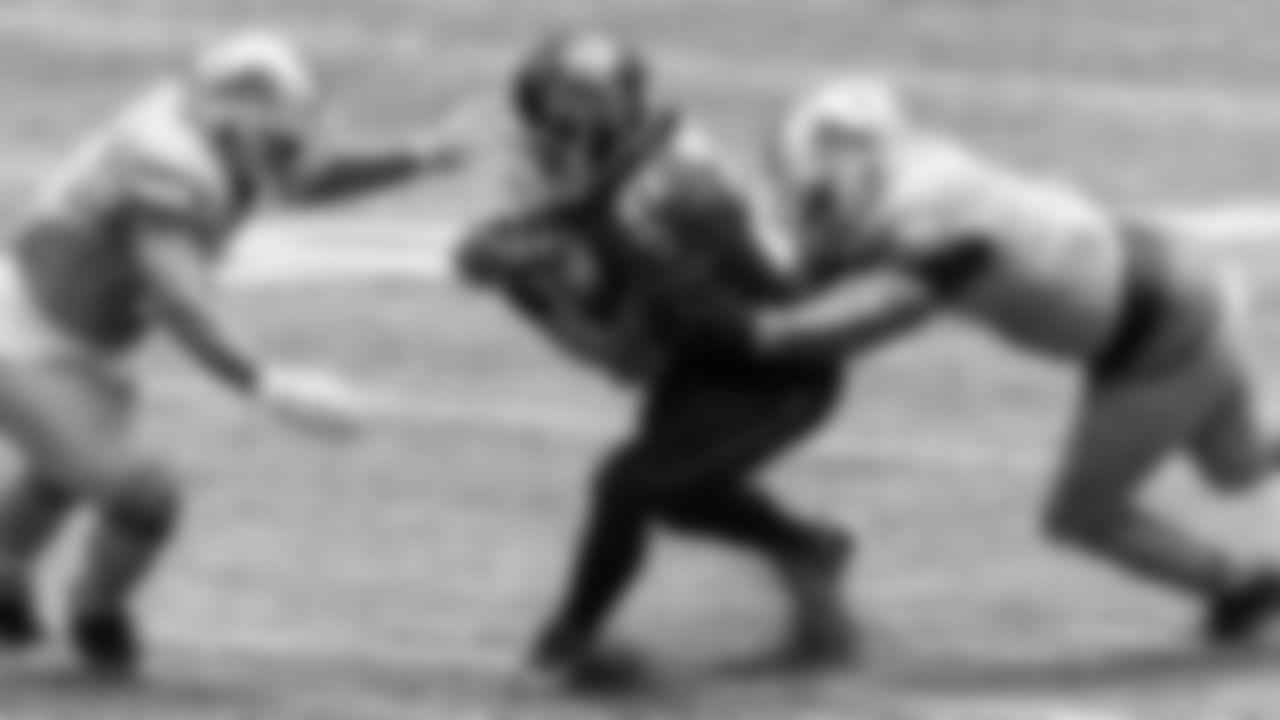
Atlanta Falcons running back Todd Gurley #21 in action during the second quarter against the Detroit Lions on October 25, 2020. (Photo by Adam Hagy/Atlanta Falcons)

Atlanta Falcons wide receiver Brandon Powell #15 in action during the second quarter against the Detroit Lions on October 25, 2020. (Photo by Adam Hagy/Atlanta Falcons)
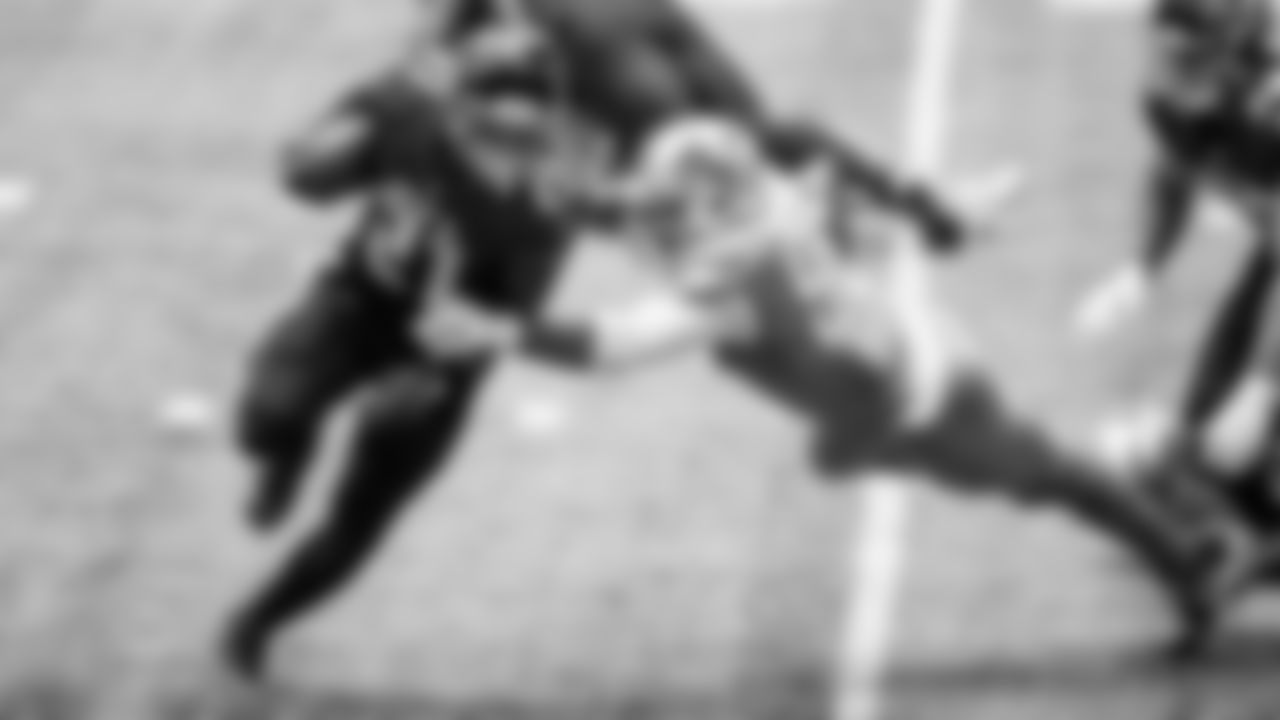
Atlanta Falcons running back Todd Gurley #21 in action during the second quarter against the Detroit Lions on October 25, 2020. (Photo by AJ Reynolds/Atlanta Falcons)
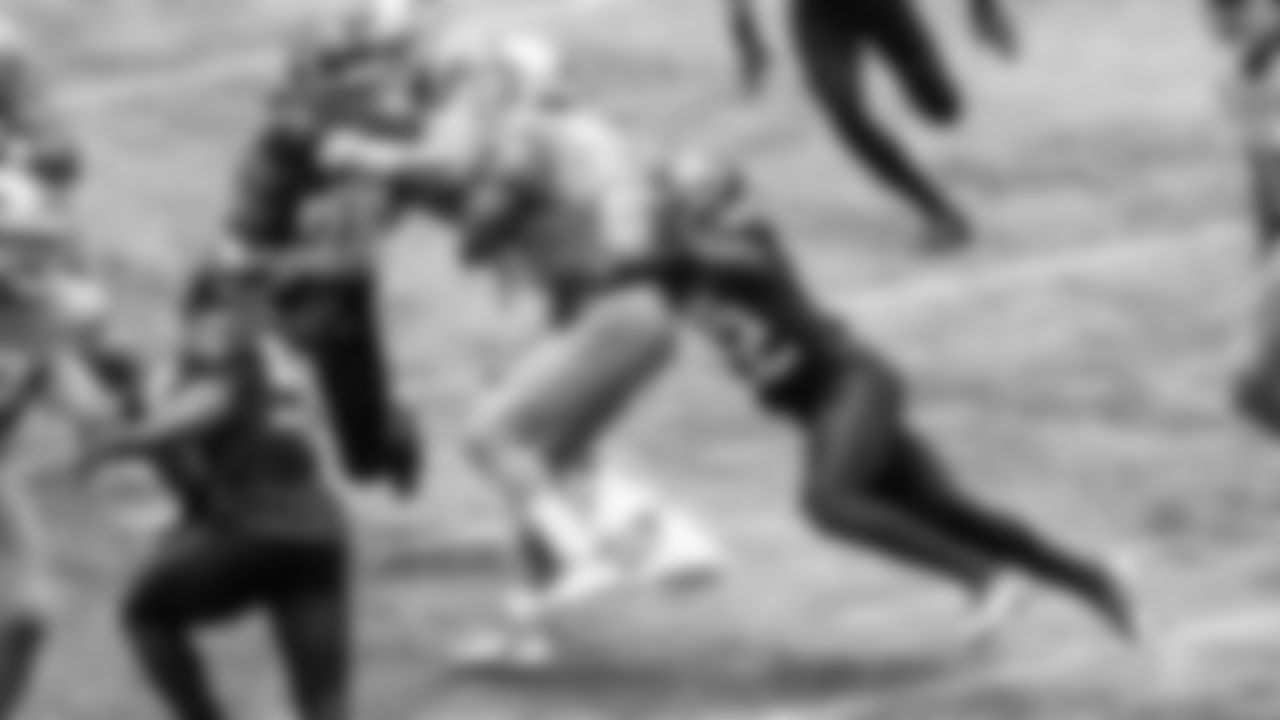
Atlanta Falcons strong safety Keanu Neal #22 in action during the second quarter against the Detroit Lions on October 25, 2020. (Photo by AJ Reynolds/Atlanta Falcons)
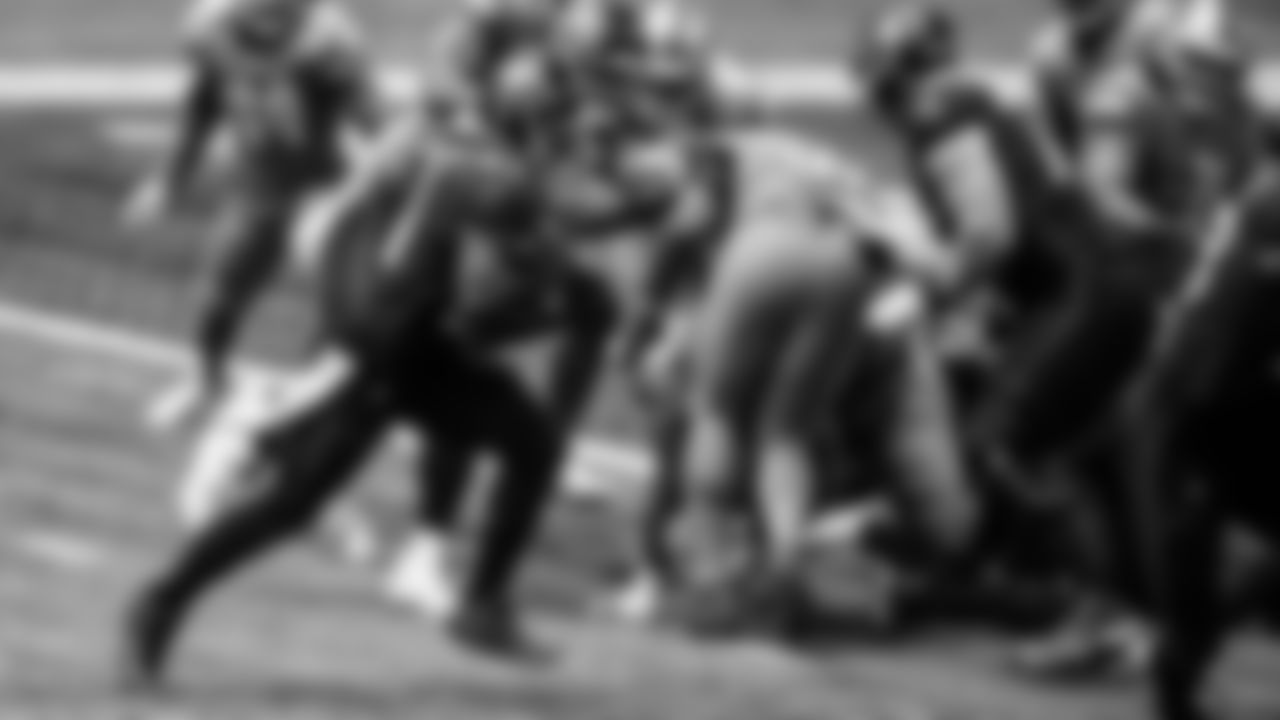
Atlanta Falcons running back Todd Gurley #21 in action during the second quarter against the Detroit Lions on October 25, 2020. (Photo by AJ Reynolds/Atlanta Falcons)

Atlanta Falcons running back Todd Gurley #21 scores a touchdown during the second quarter against the Detroit Lions on October 25, 2020. (Photo by AJ Reynolds/Atlanta Falcons)
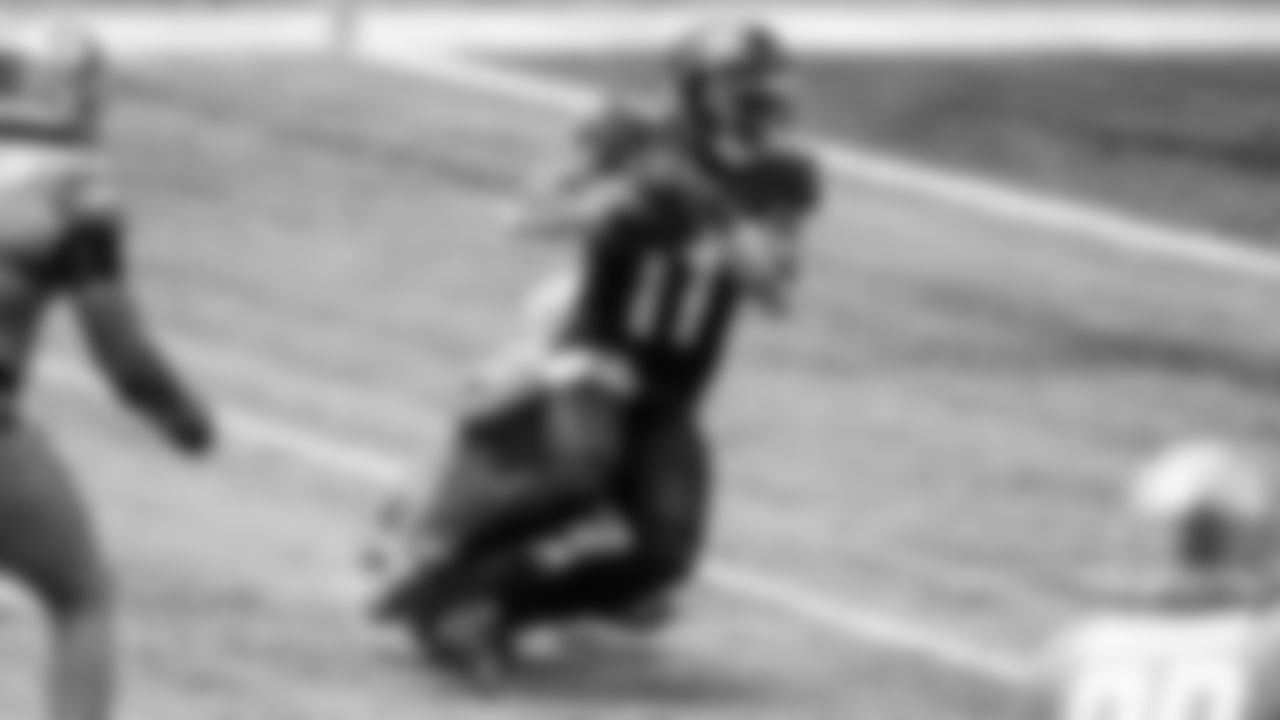
Atlanta Falcons wide receiver Julio Jones #11 in action during the second quarter against the Detroit Lions on October 25, 2020. (Photo by AJ Reynolds/Atlanta Falcons)
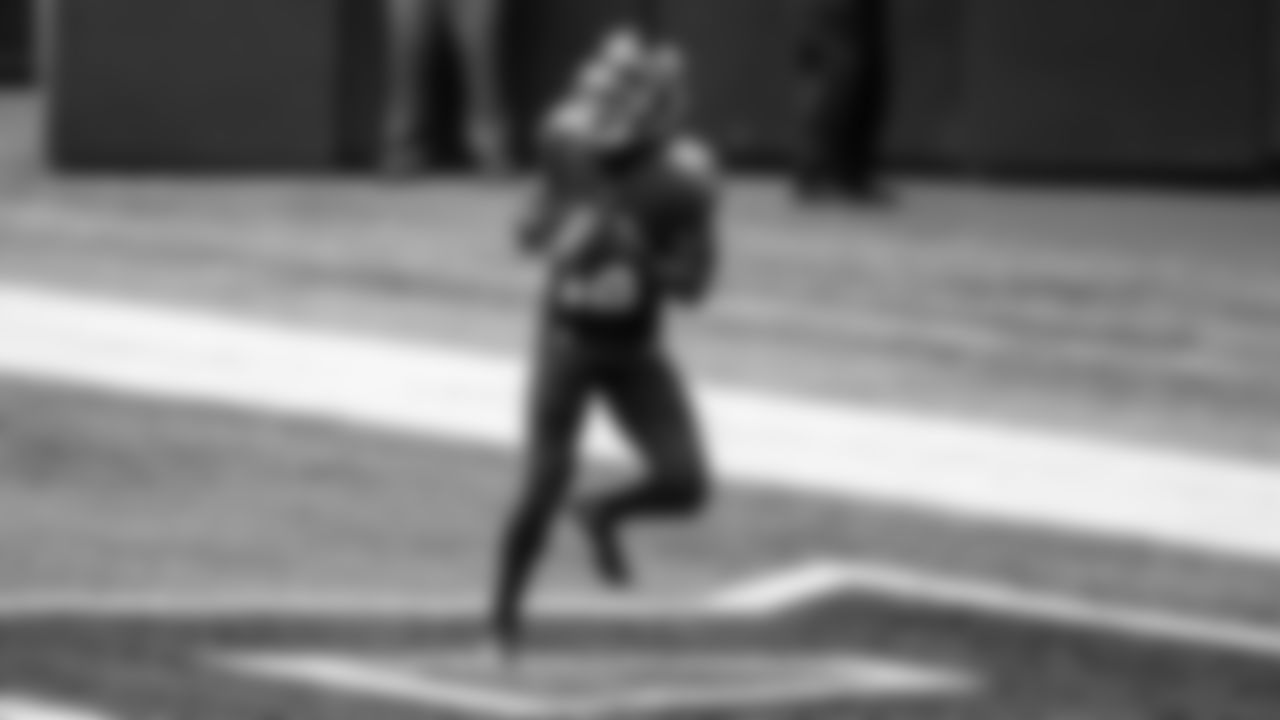
Atlanta Falcons wide receiver Calvin Ridley #18 scores a touchdown during the second quarter against the Detroit Lions on October 25, 2020. (Photo by AJ Reynolds/Atlanta Falcons)

Atlanta Falcons running back Todd Gurley #21 and Atlanta Falcons head coach Raheem Morris are shown after Todd Gurley II scored a touchdown during the second quarter against the Detroit Lions on October 25, 2020. (Photo by AJ Reynolds/Atlanta Falcons)
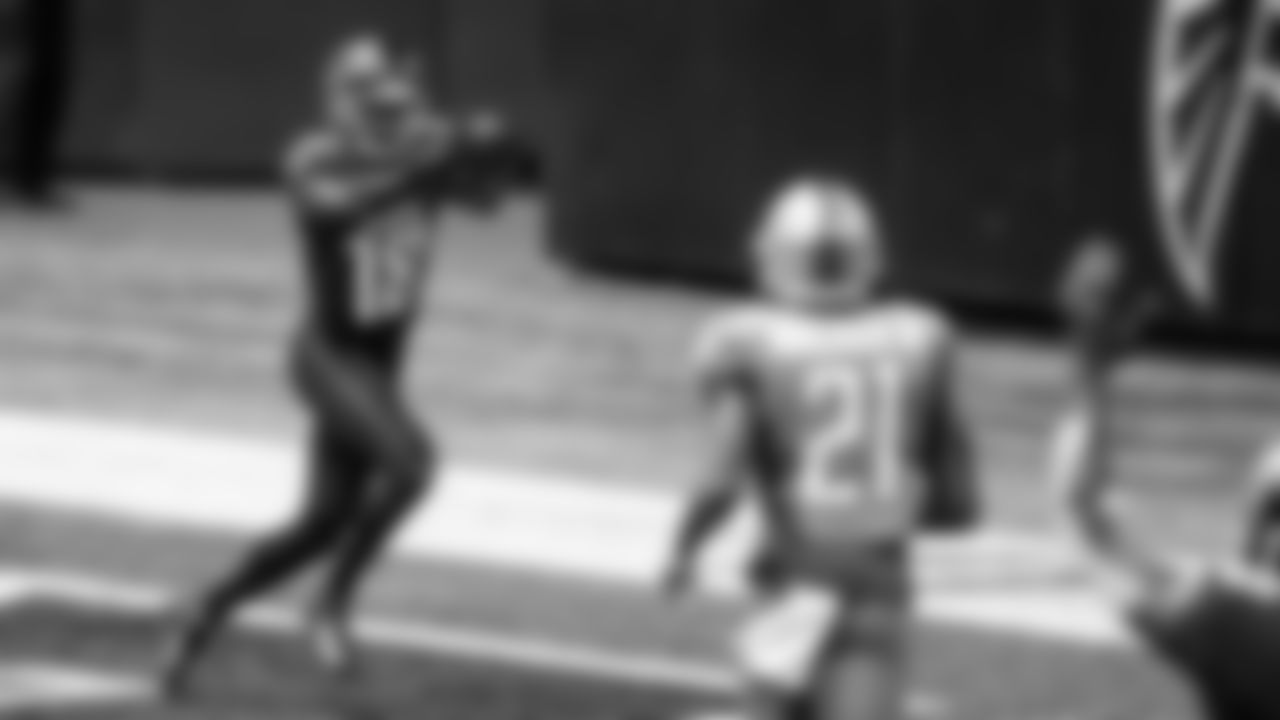
Atlanta Falcons wide receiver Calvin Ridley #18 scores a touchdown during the second quarter against the Detroit Lions on October 25, 2020. (Photo by AJ Reynolds/Atlanta Falcons)

Atlanta Falcons wide receiver Calvin Ridley #18 receives the ball for a touchdown during the second quarter against the Detroit Lions on October 25, 2020. (Photo by Adam Hagy/Atlanta Falcons)

Atlanta Falcons quarterback Matt Ryan #2 and wide receiver Julio Jones #11 are shown together after quarterback Matt Ryan #2 threw a touchdown pass to wide receiver Calvin Ridley #18 during the second quarter against the Detroit Lions on October 25, 2020. (Photo by AJ Reynolds/Atlanta Falcons)

Atlanta Falcons wide receiver Calvin Ridley #18 celebrates with quarterback Matt Ryan #2 altering scoring a touchdown during the second quarter against the Detroit Lions on October 25, 2020. (Photo by AJ Reynolds/Atlanta Falcons)
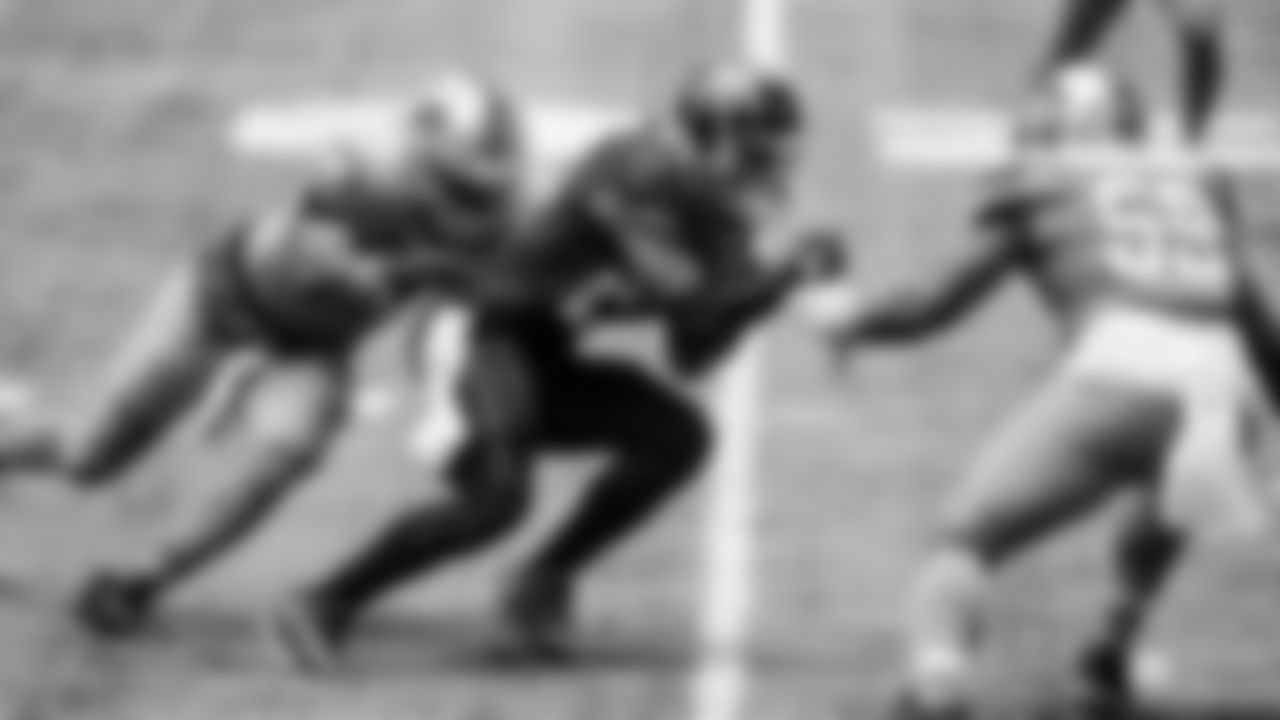
Atlanta Falcons running back Todd Gurley #21 in action during the second quarter against the Detroit Lions on October 25, 2020. (Photo by AJ Reynolds/Atlanta Falcons)

Atlanta Falcons wide receiver Calvin Ridley #18 and Atlanta Falcons head coach Raheem Morris are shown after Calvin Ridley scores a touchdown during the second quarter in against the Detroit Lions on October 25, 2020. (Photo by Rob Foldy/Atlanta Falcons)

Atlanta Falcons quarterback Matt Ryan #2 in action during the second quarter against the Detroit Lions on October 25, 2020. (Photo by Rob Foldy/Atlanta Falcons)

Atlanta Falcons wide receiver Julio Jones #11 in action during the second quarter against the Detroit Lions on October 25, 2020. (Photo by Rob Foldy/Atlanta Falcons)

Atlanta Falcons wide receiver Julio Jones #11 in action during the third quarter against the Detroit Lions on October 25, 2020. (Photo by AJ Reynolds/Atlanta Falcons)
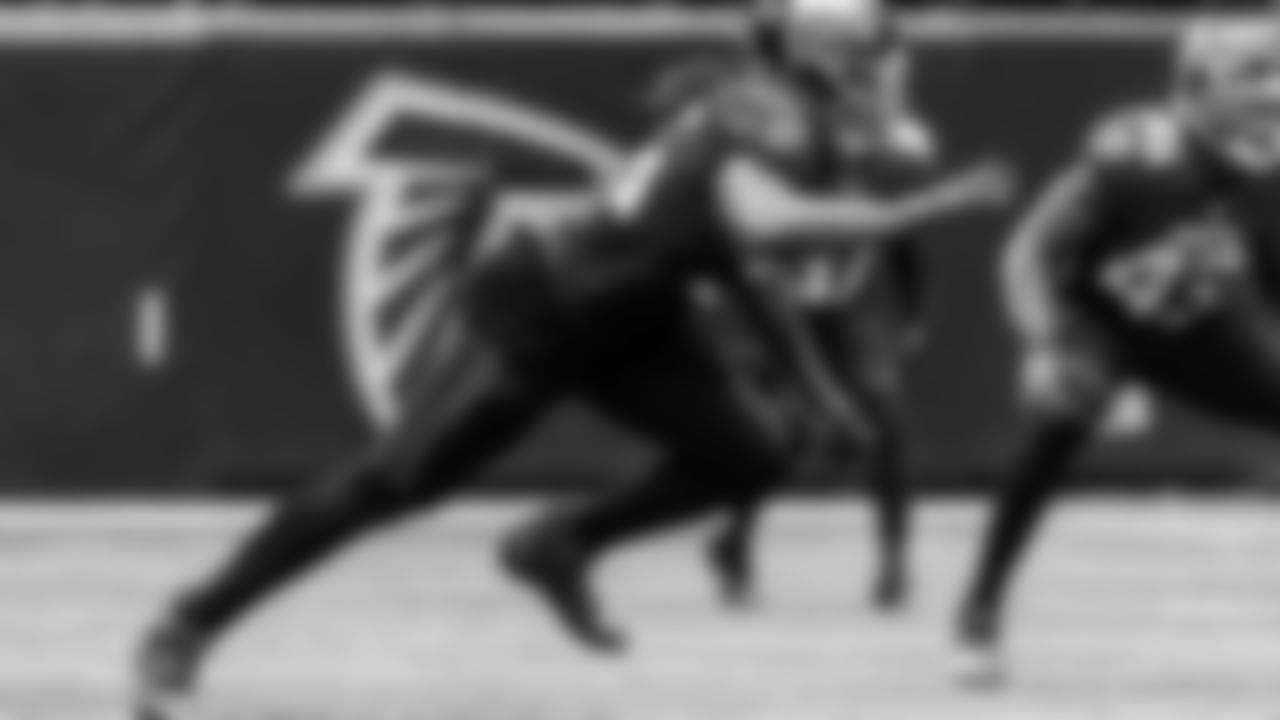

Atlanta Falcons wide receiver Calvin Ridley #18 celebrates with quarterback Matt Ryan #2 altering scoring a touchdown during the second quarter against the Detroit Lions on October 25, 2020. (Photo by AJ Reynolds/Atlanta Falcons)

Atlanta Falcons strong safety Keanu Neal #22 makes a tackle during the first half against the Detroit Lions on October 25, 2020. (Photo by Kyle Hess/Atlanta Falcons)

Atlanta Falcons linebacker Deion Jones #45 sacks Detroit Lions quarterback Matthew Stafford #9 during the third quarter \ragainst the Detroit Lions on October 25, 2020. (Photo by Rob Foldy/Atlanta Falcons)
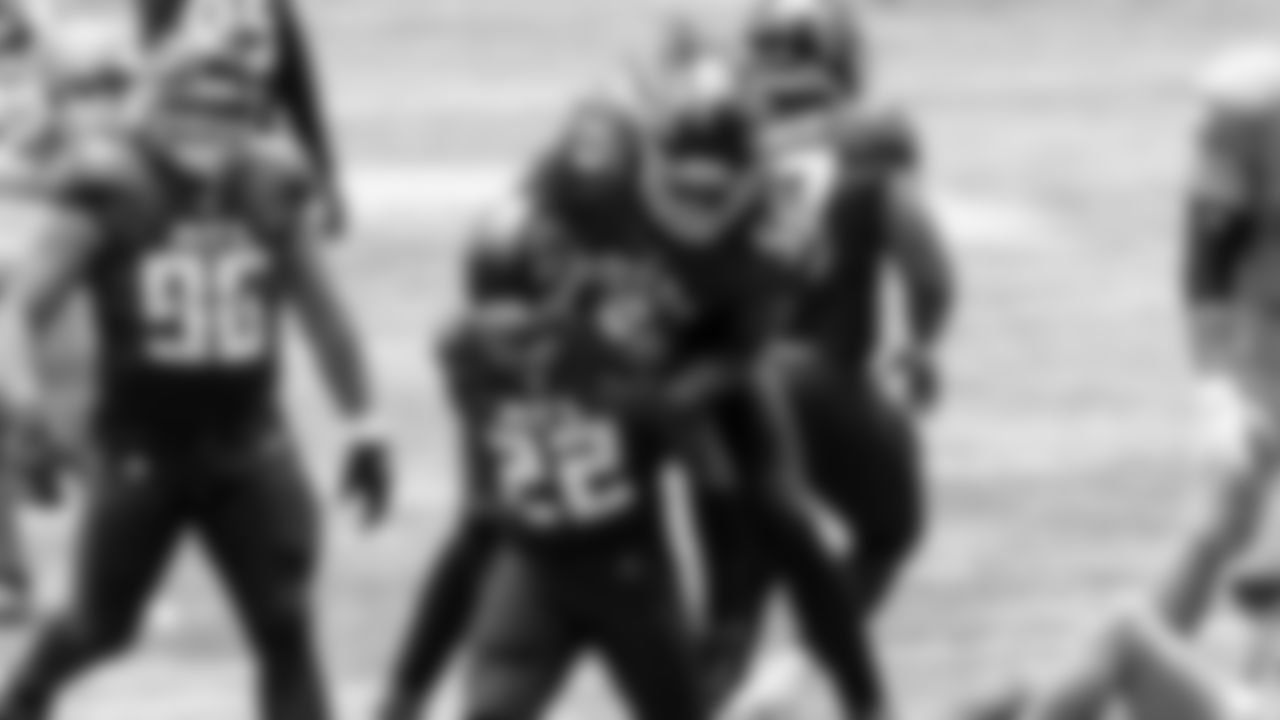
Atlanta Falcons strong safety Keanu Neal #22 and defensive end Steven Means #55 celebrate after making sack a play during the third quarter against the Detroit Lions on October 25, 2020. (Photo by Adam Hagy/Atlanta Falcons)

Atlanta Falcons defensive back Kendall Sheffield #20 in action during the third quarter against the Detroit Lions on October 25, 2020. (Photo by Adam Hagy/Atlanta Falcons)
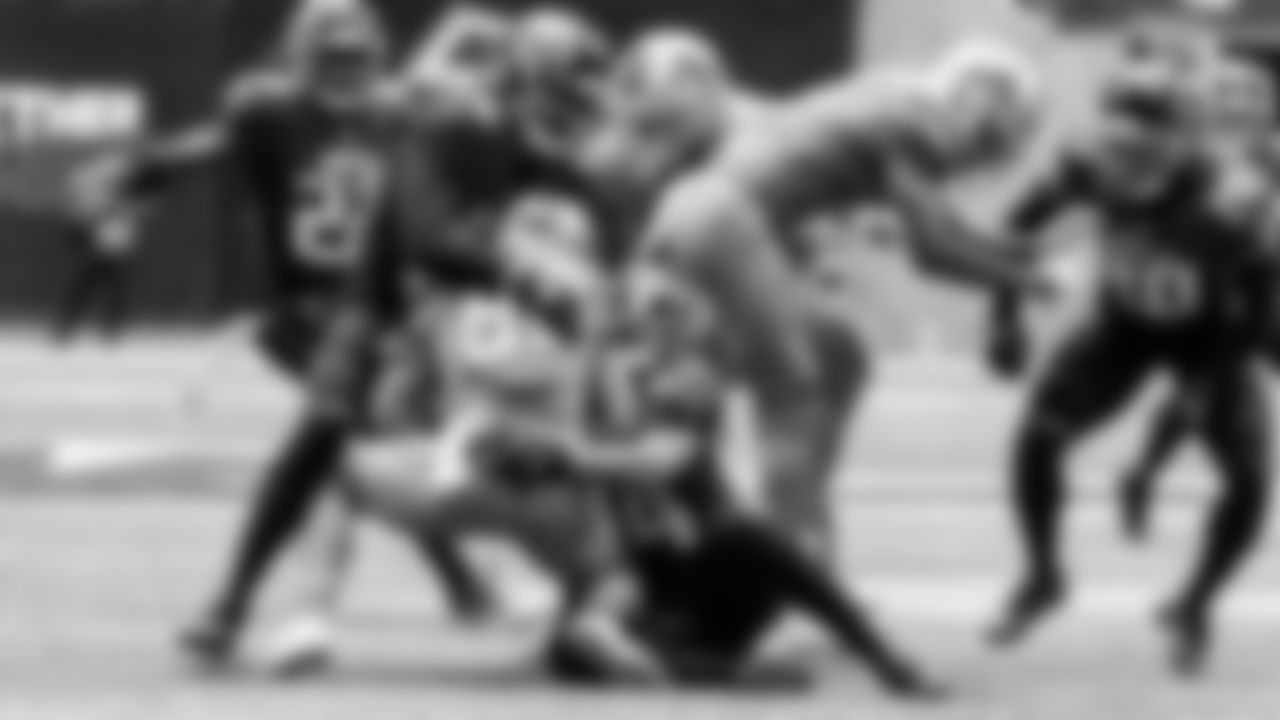
Atlanta Falcons cornerback A.J. Terrell #24 and cornerback Isaiah Oliver #26 make a tackle during the third quarter against the Detroit Lions on October 25, 2020. (Photo by Rob Foldy/Atlanta Falcons)


















